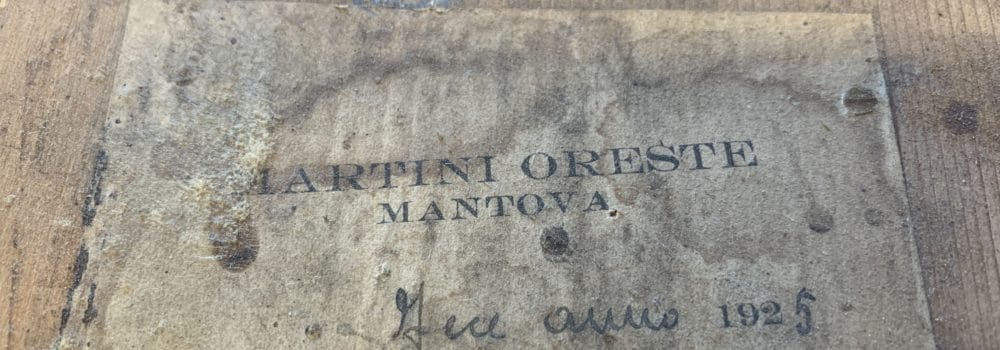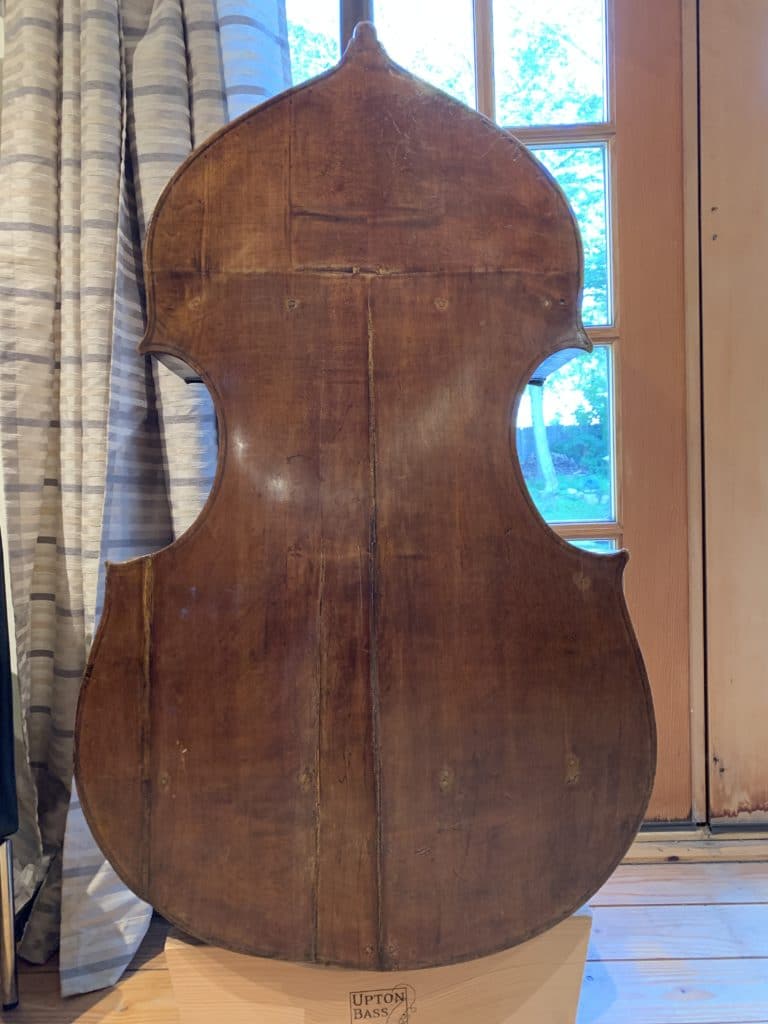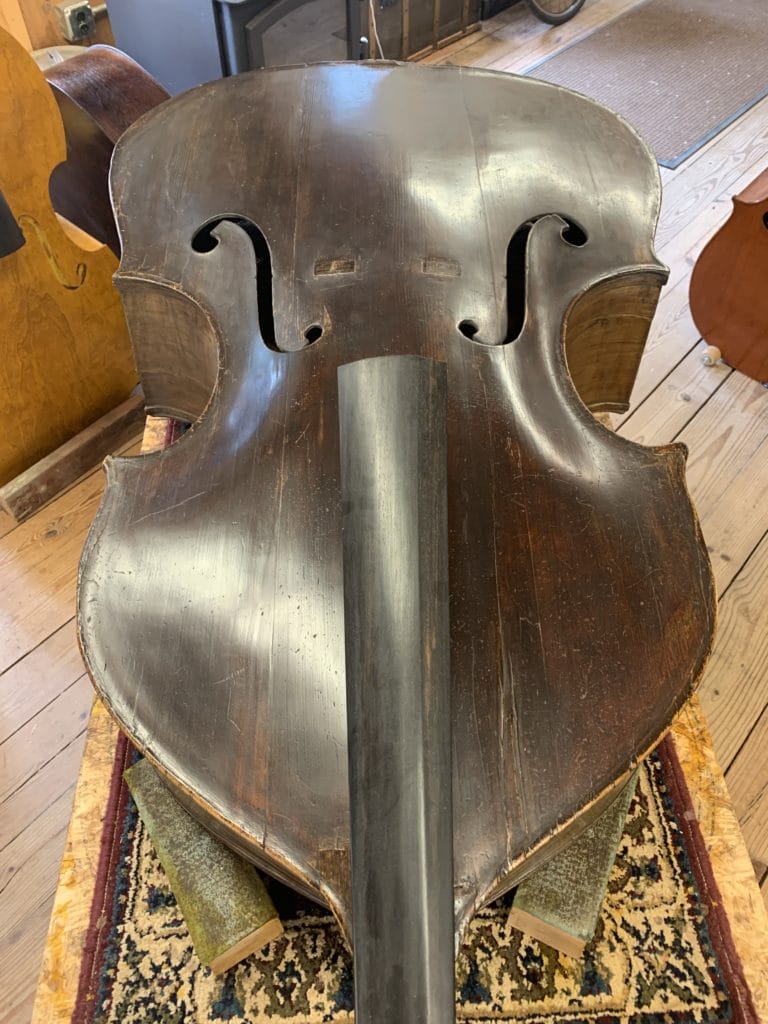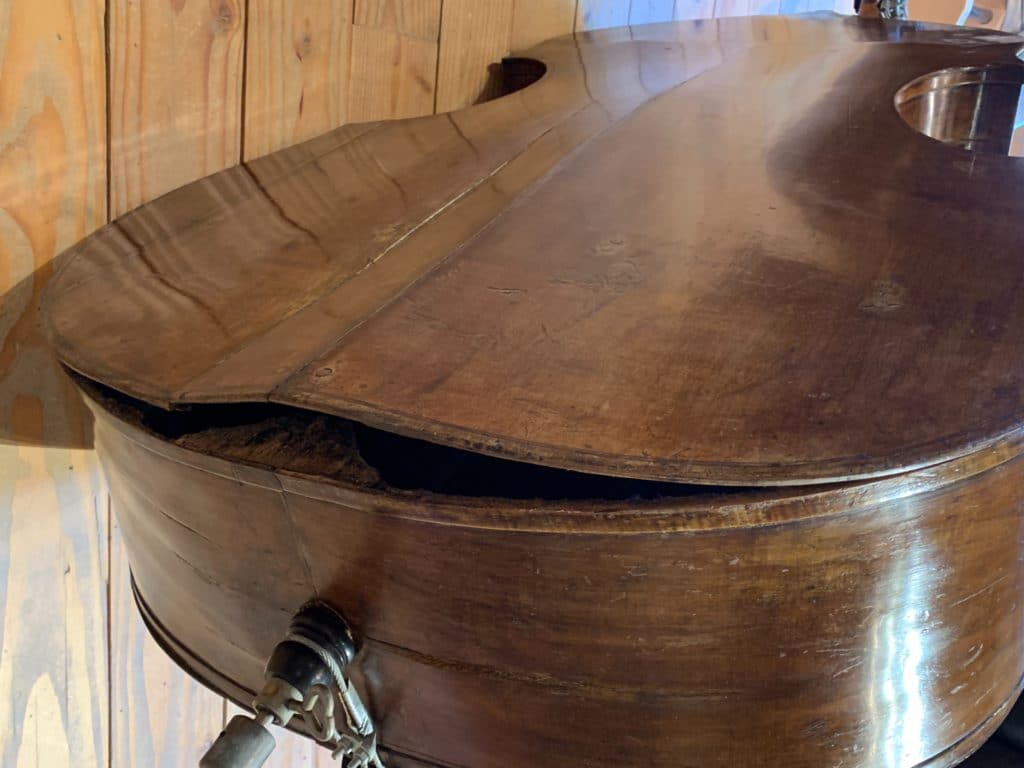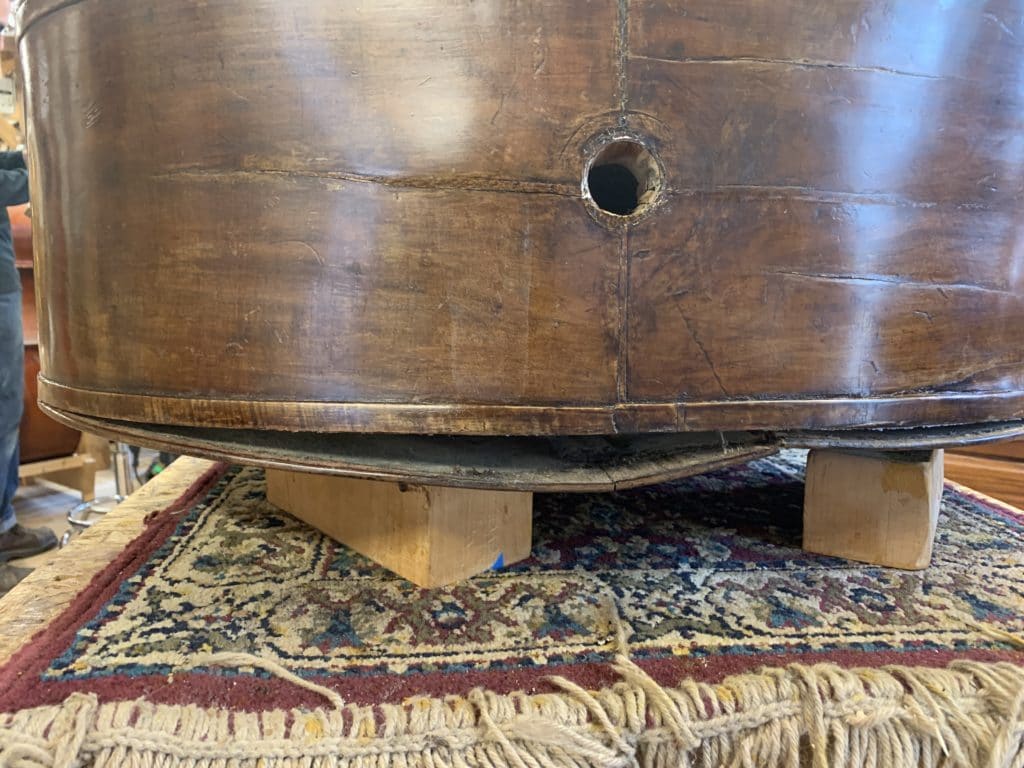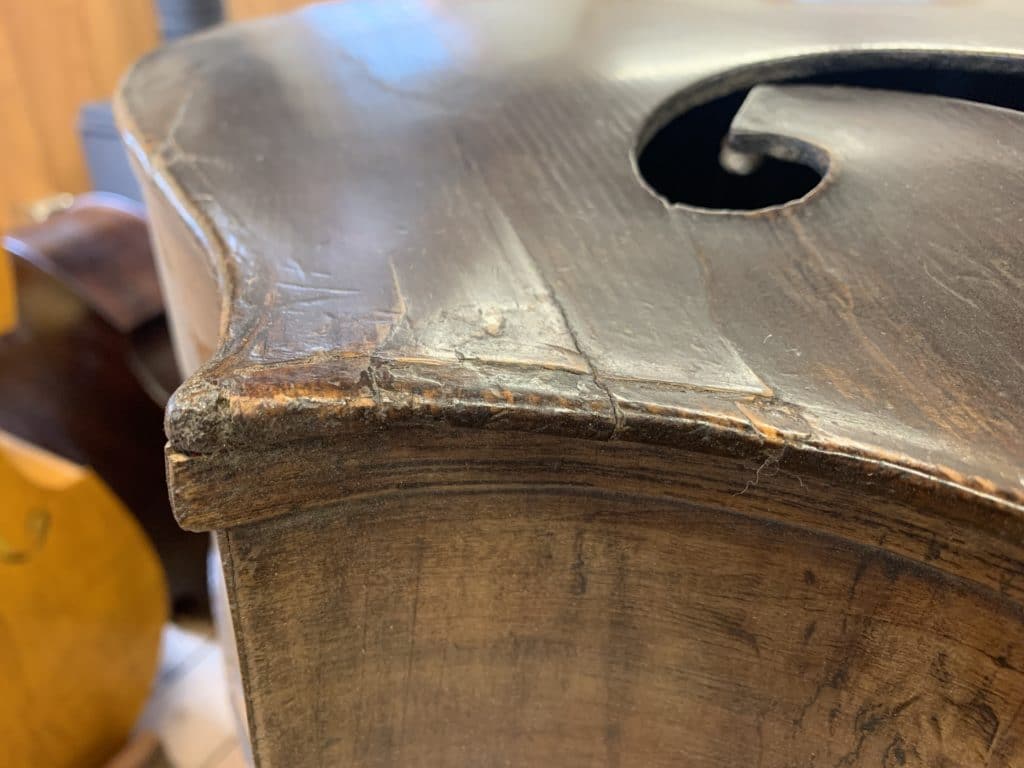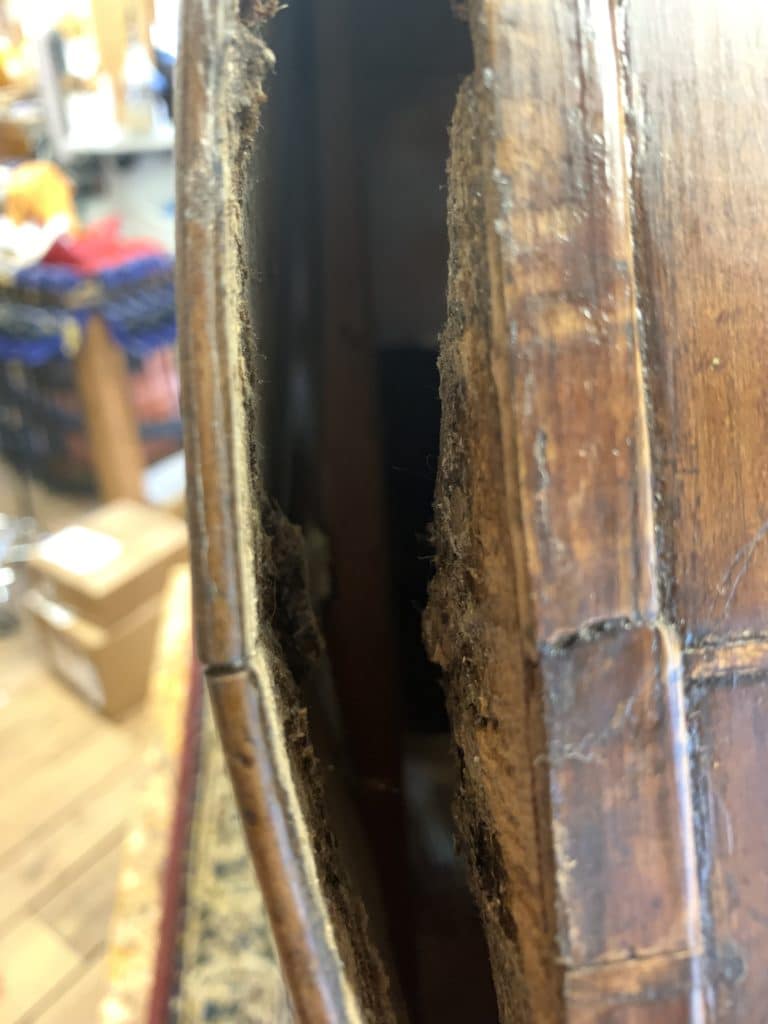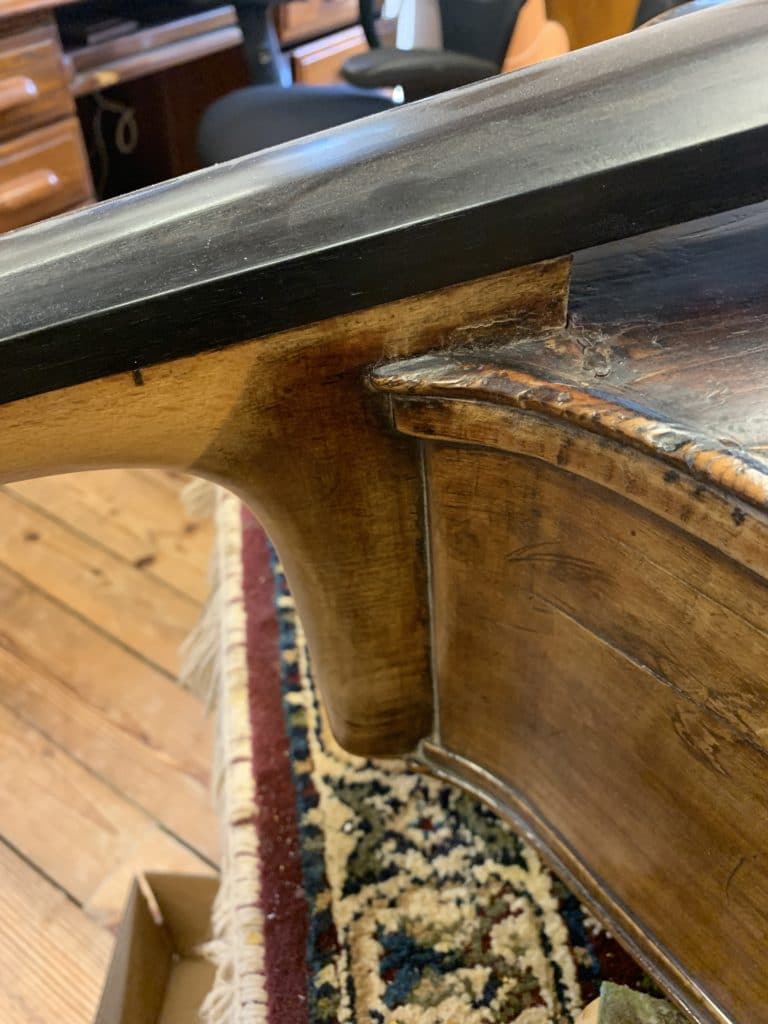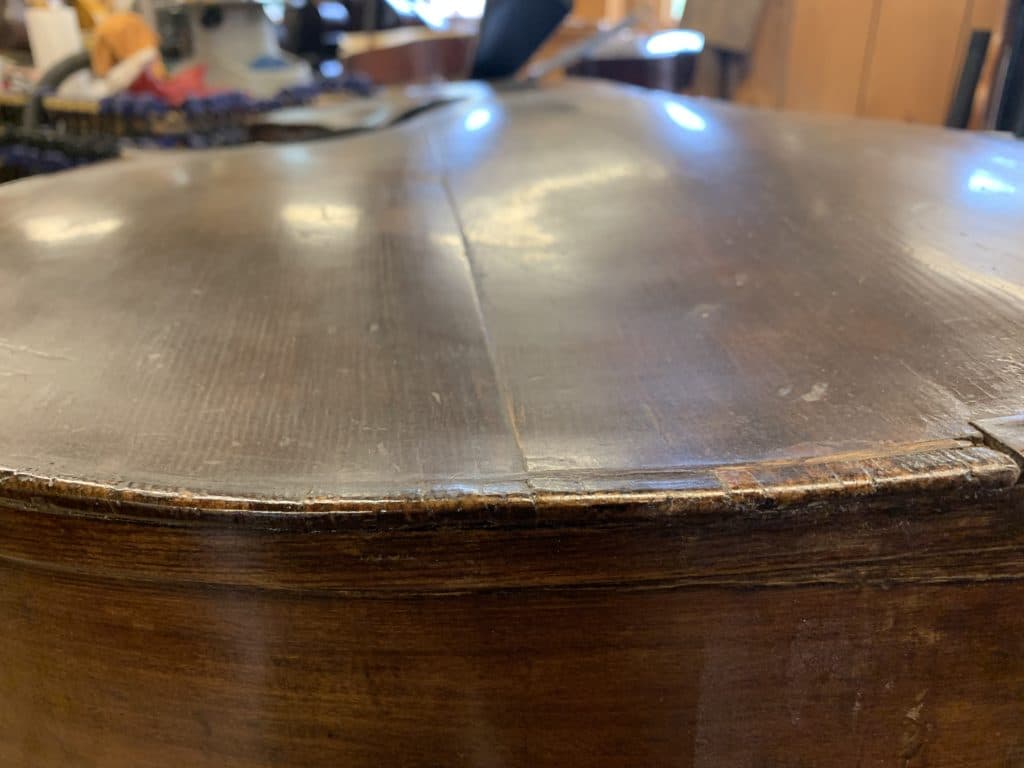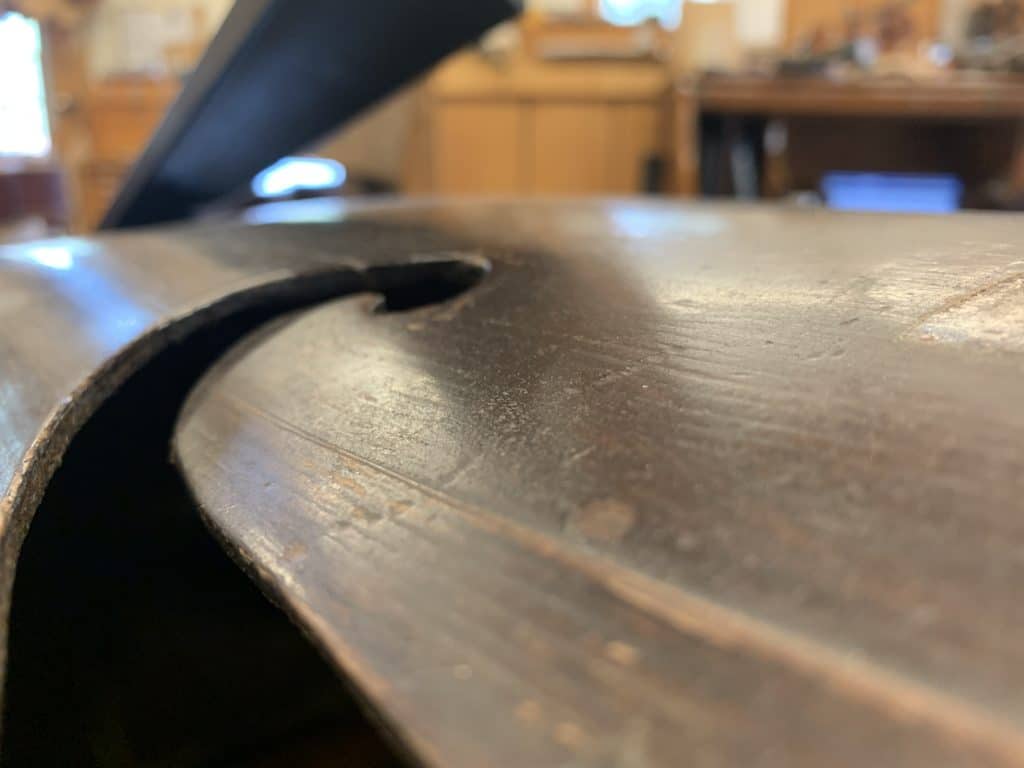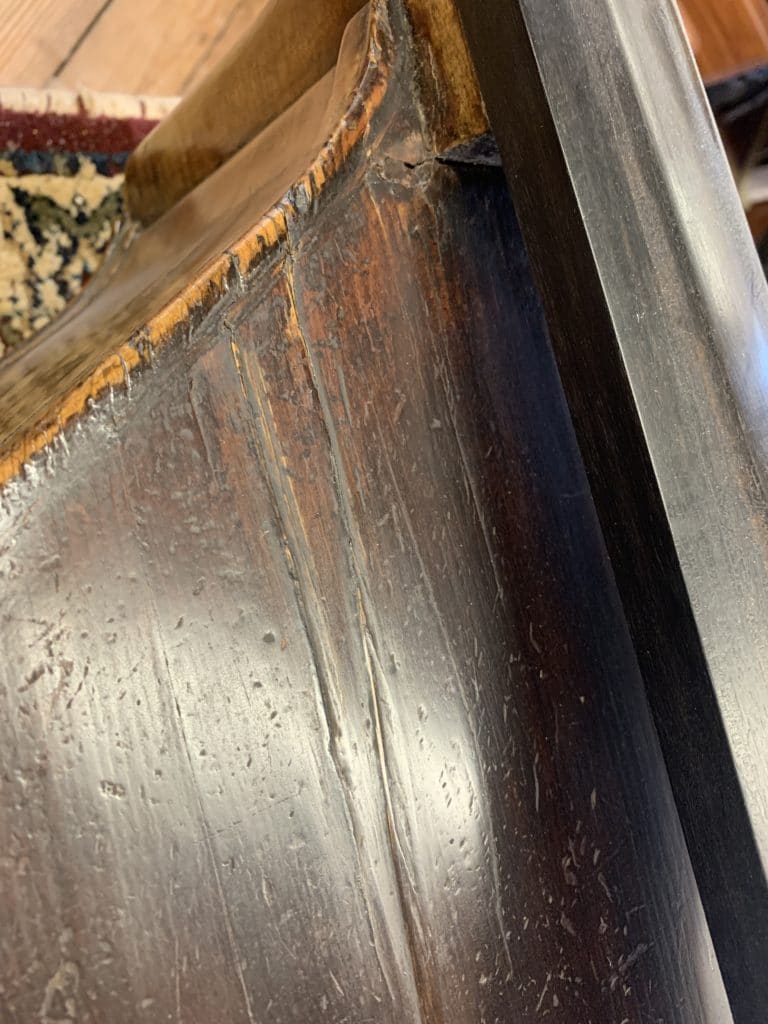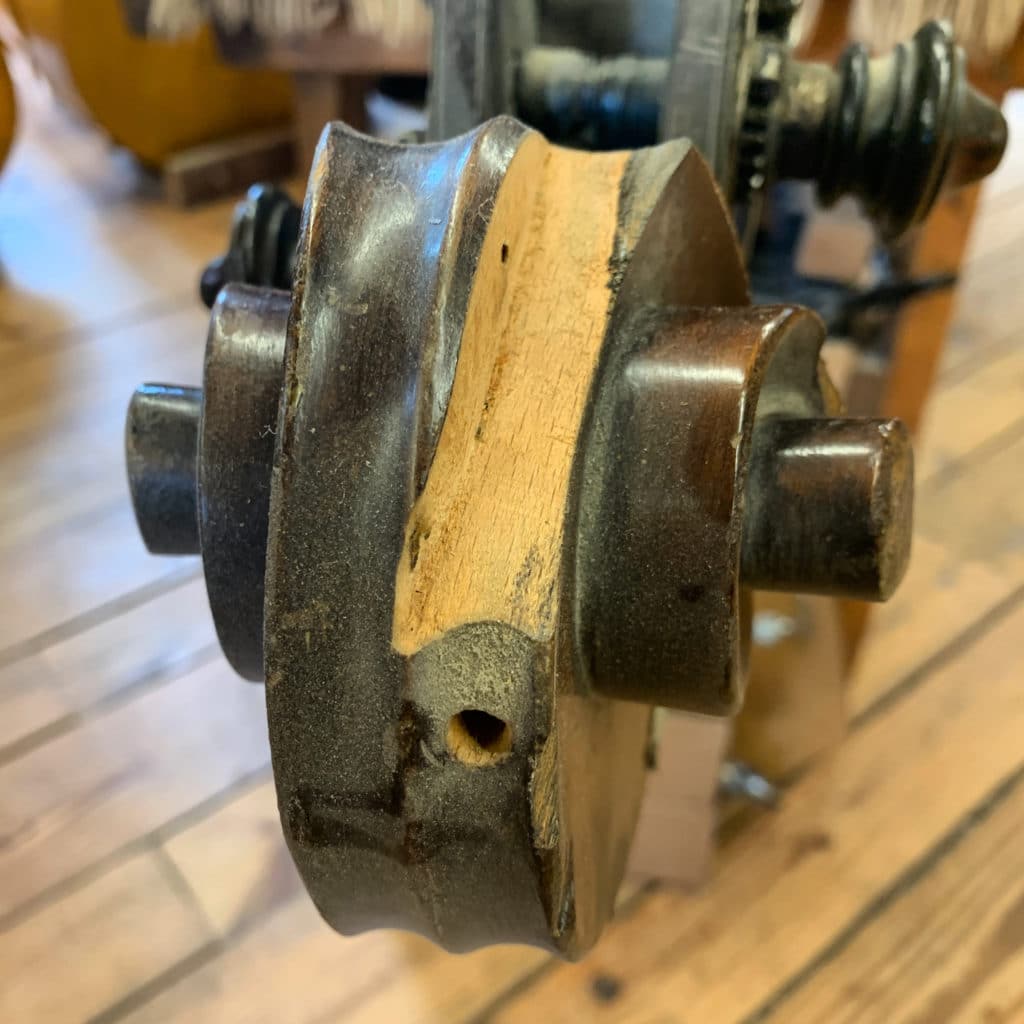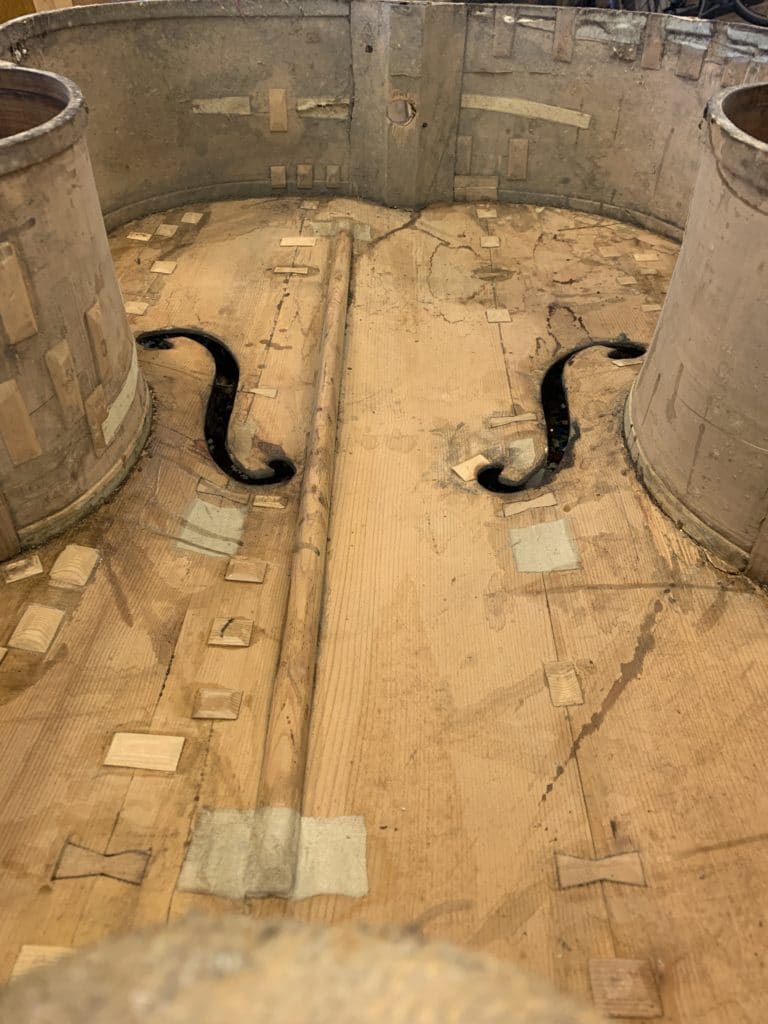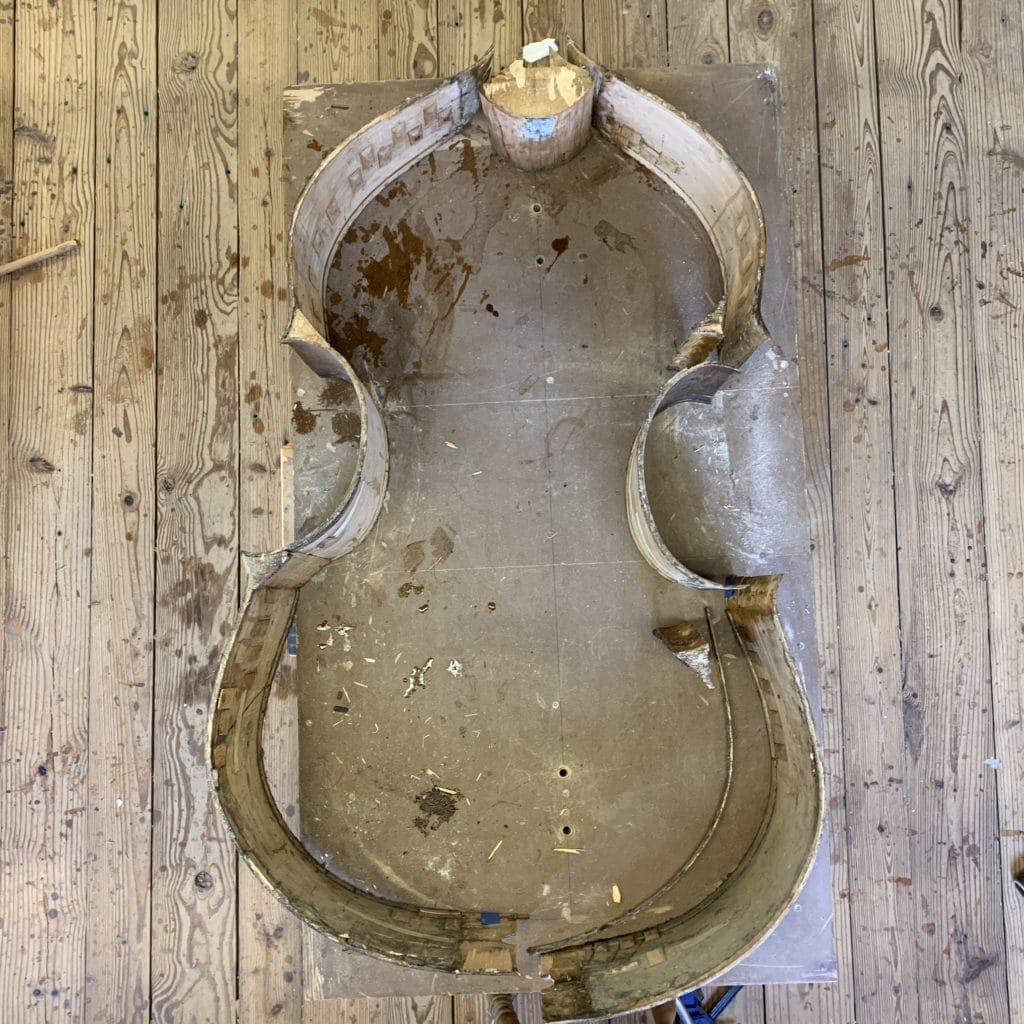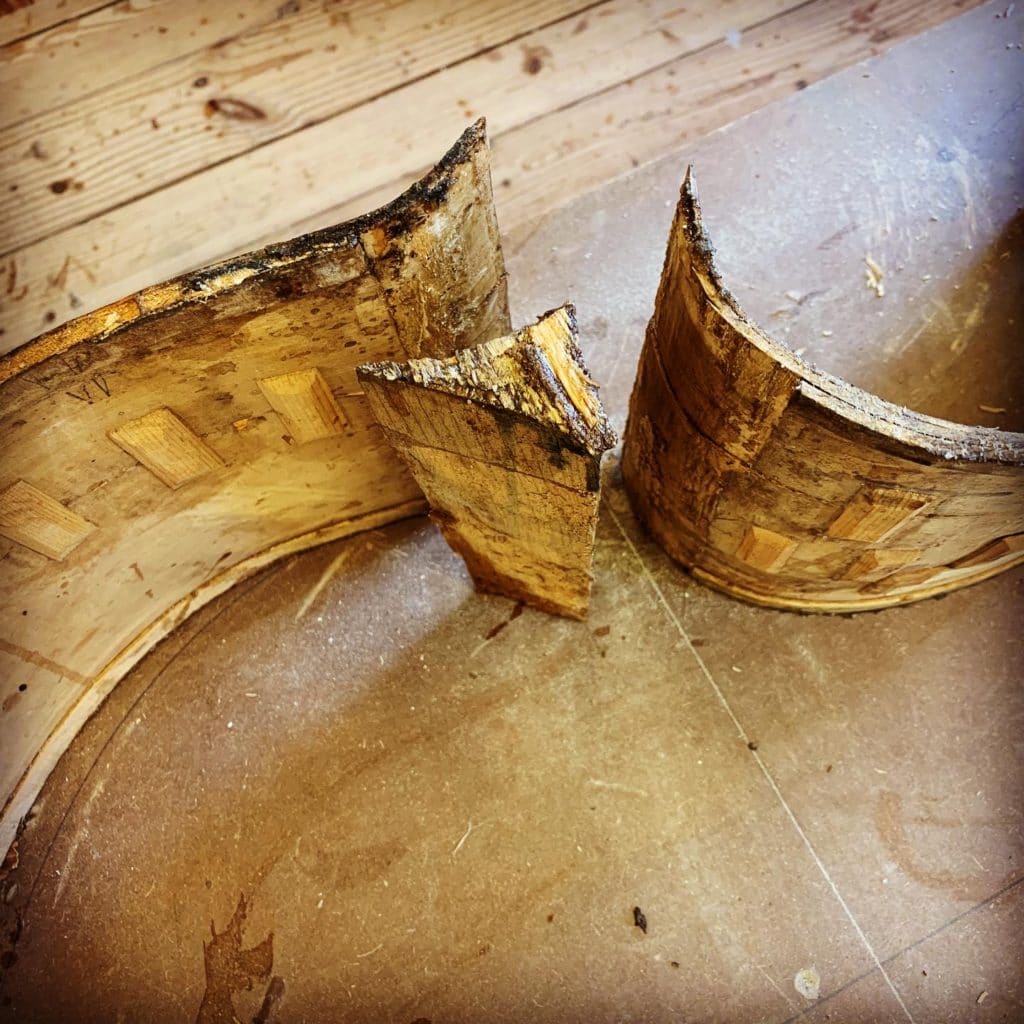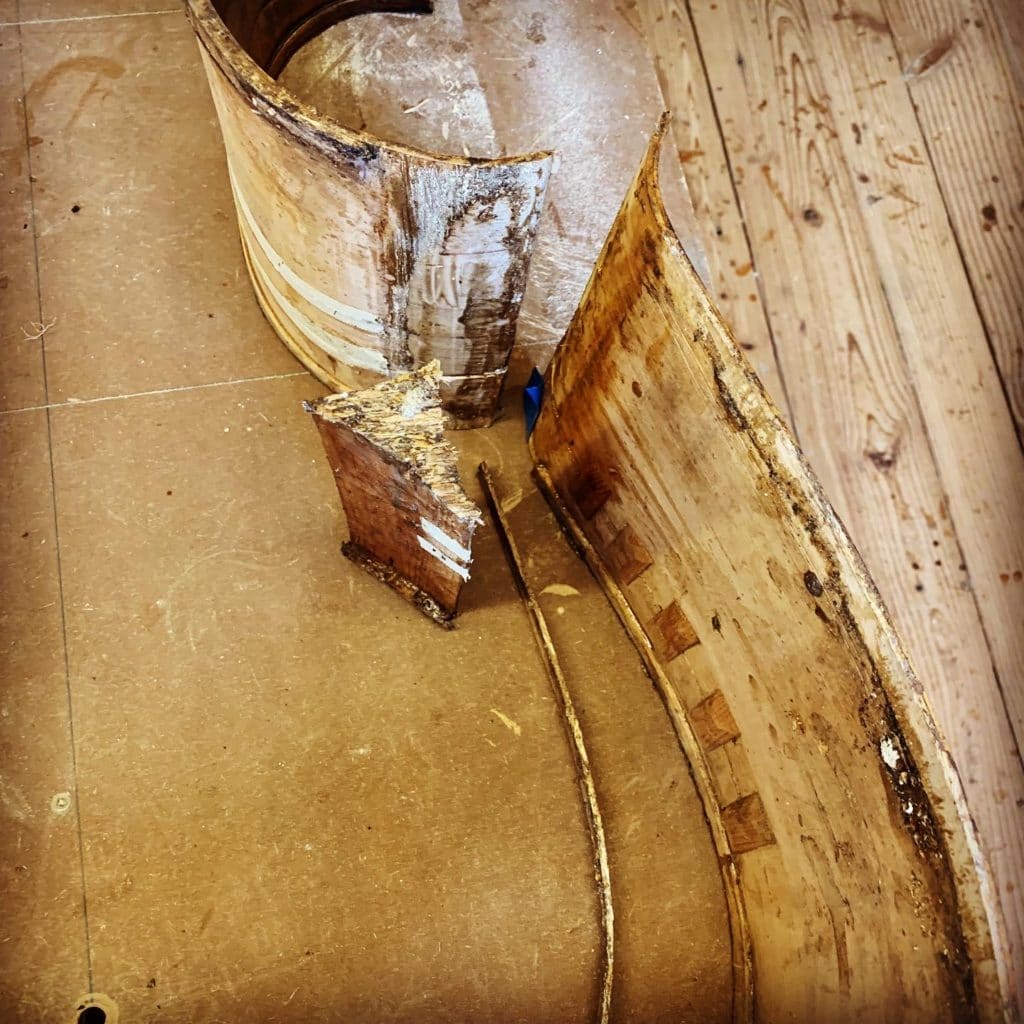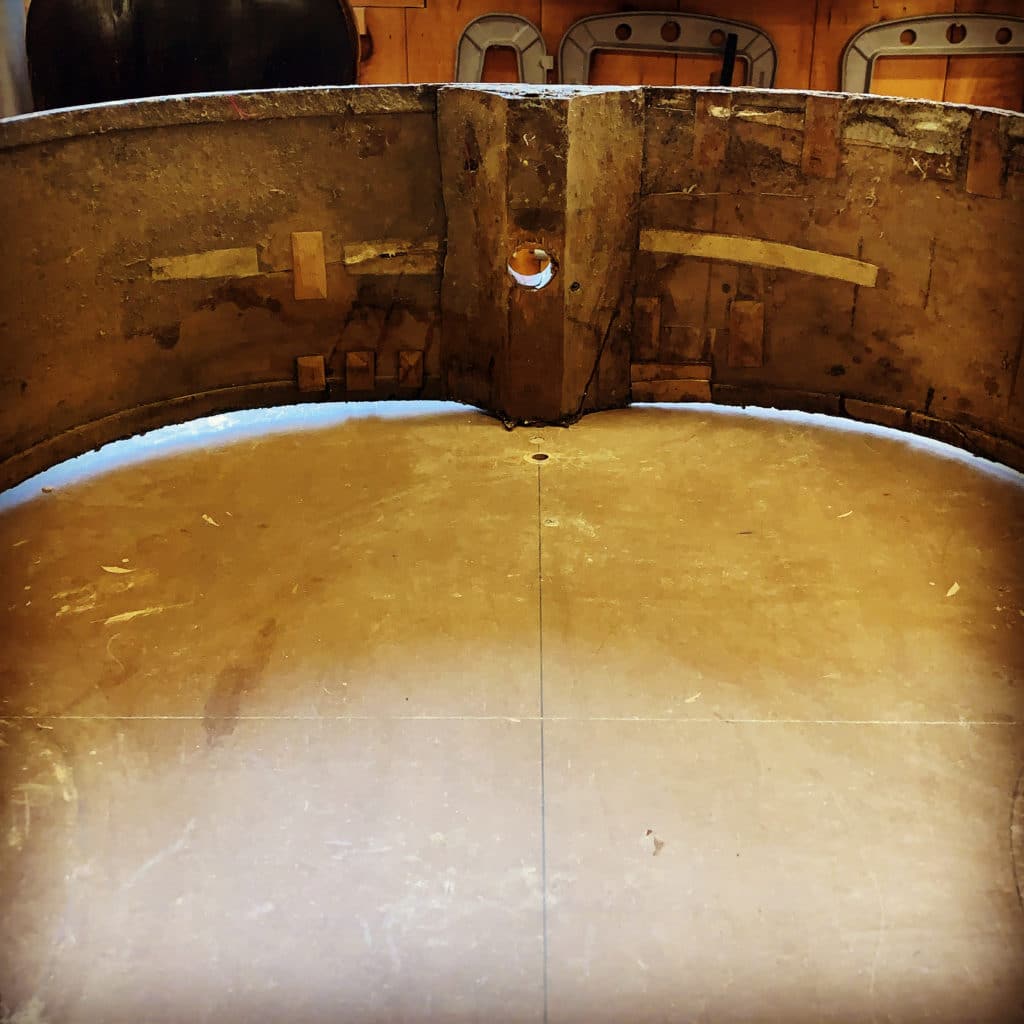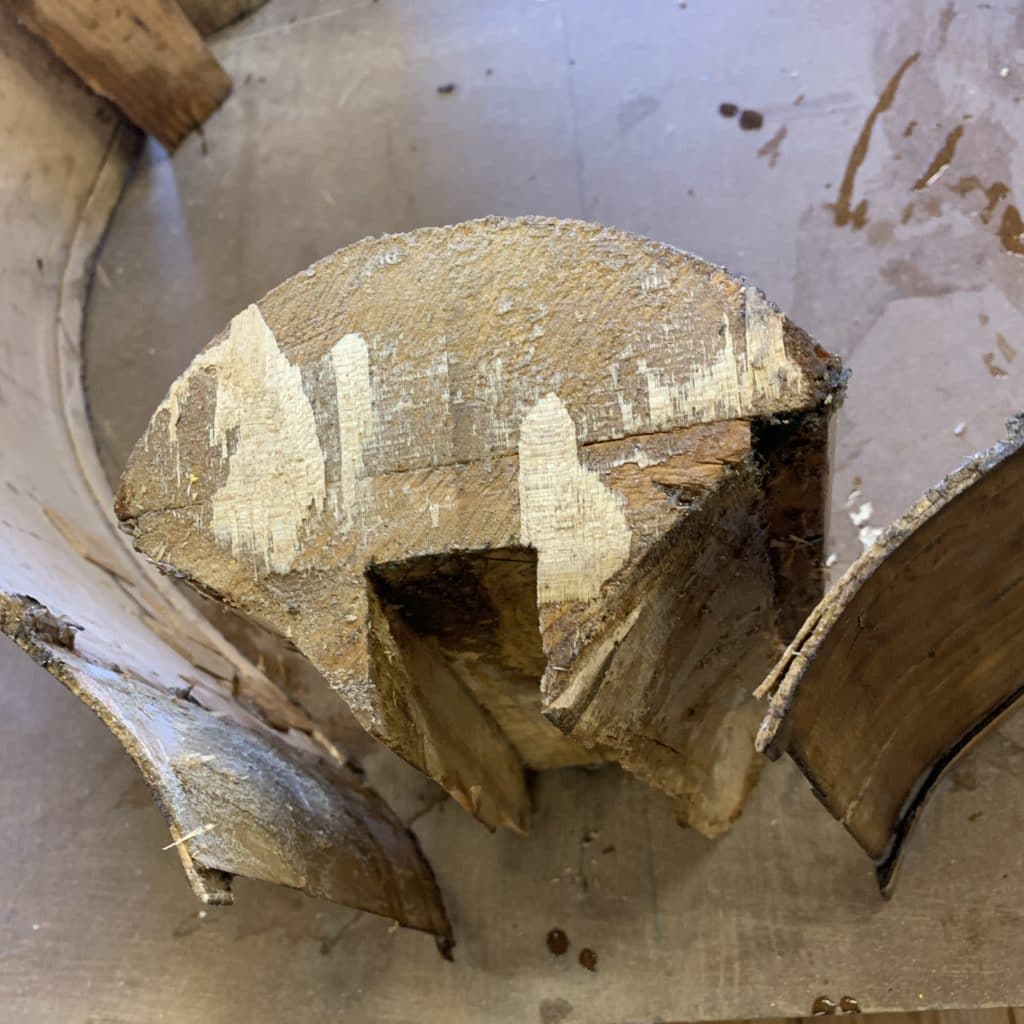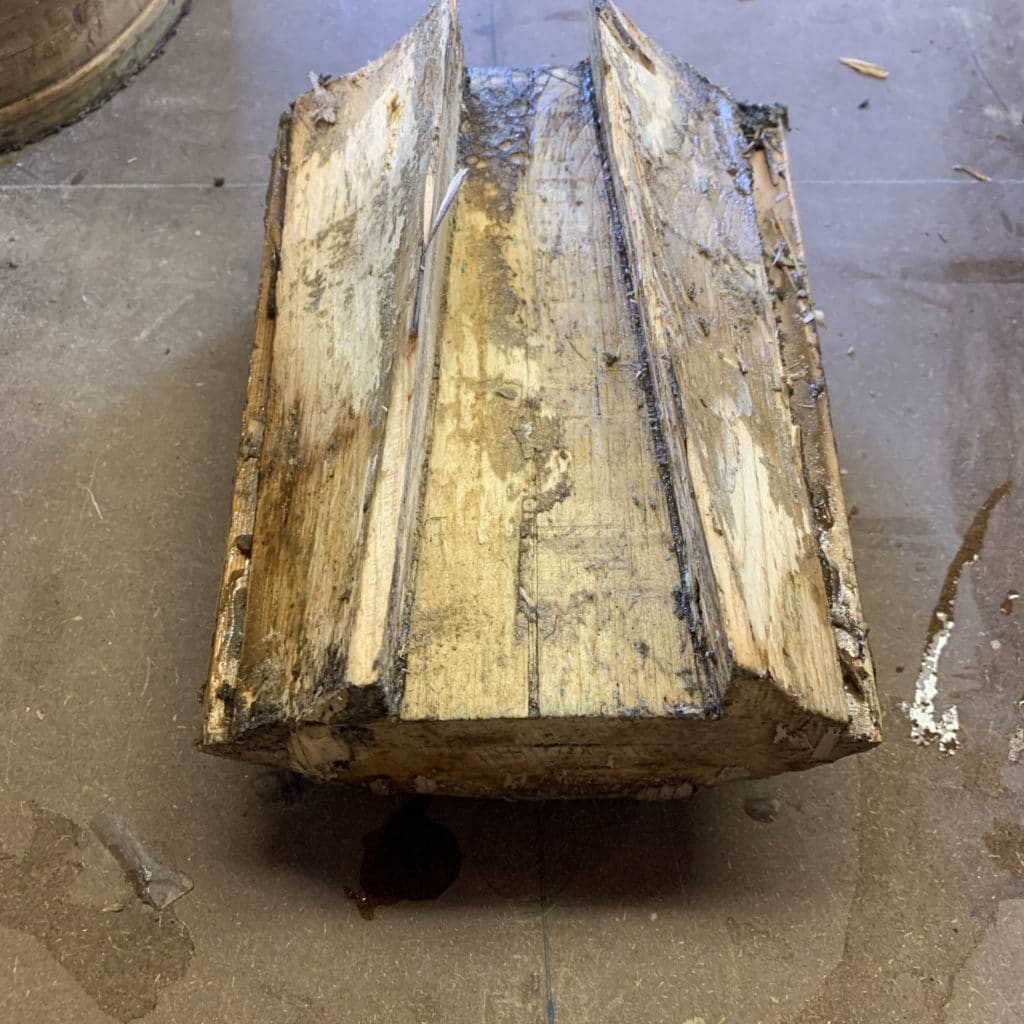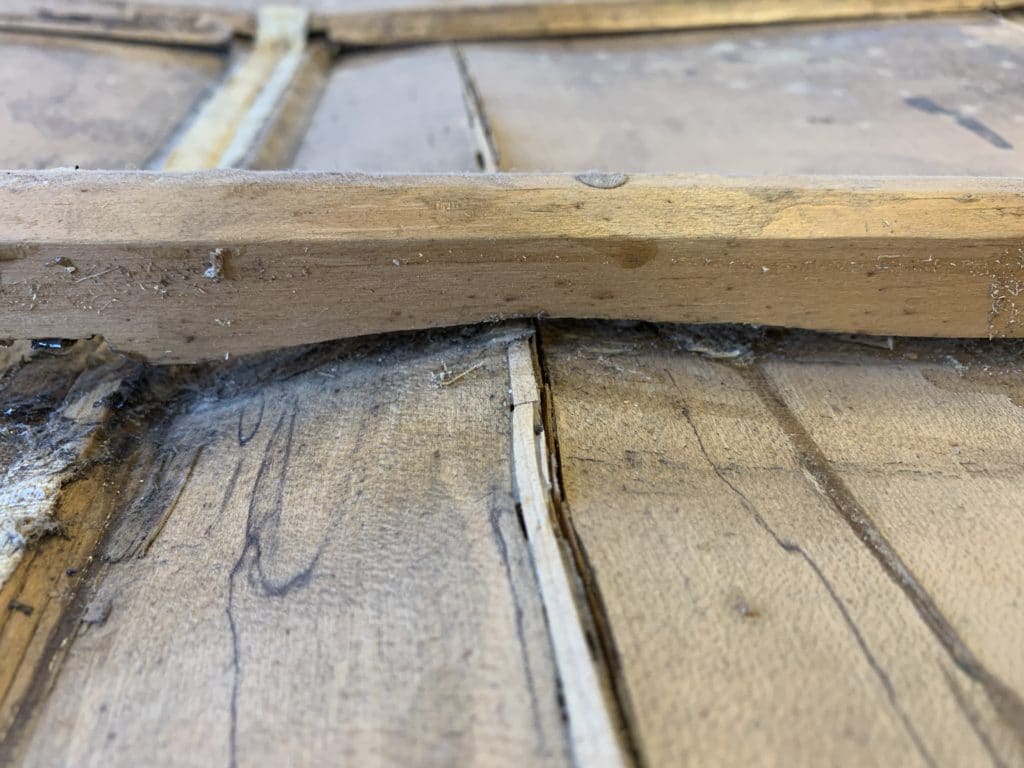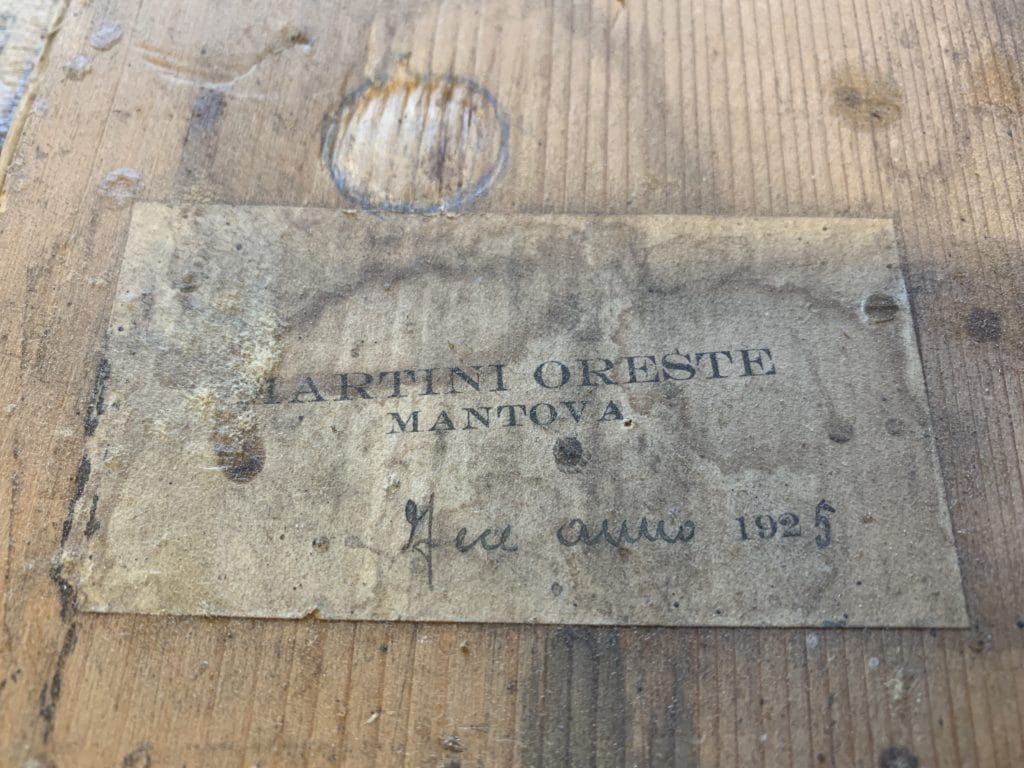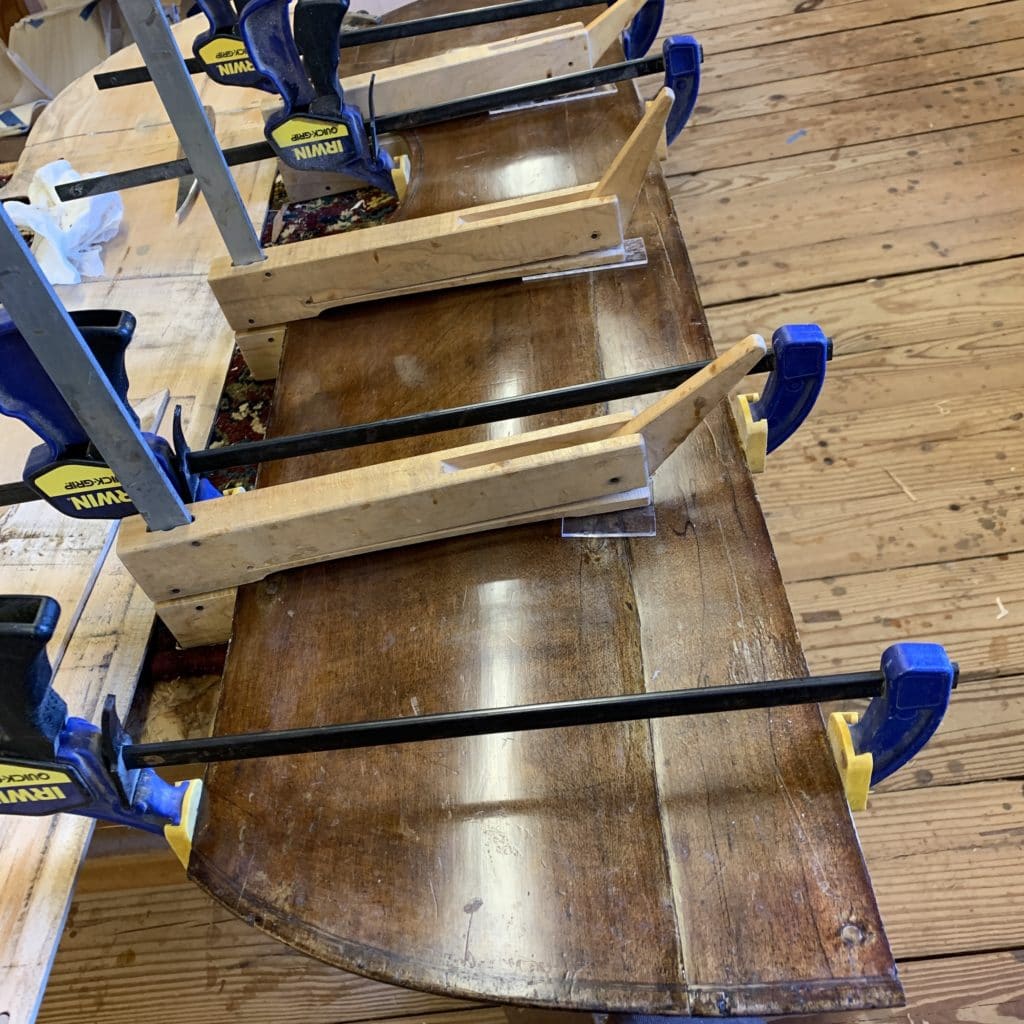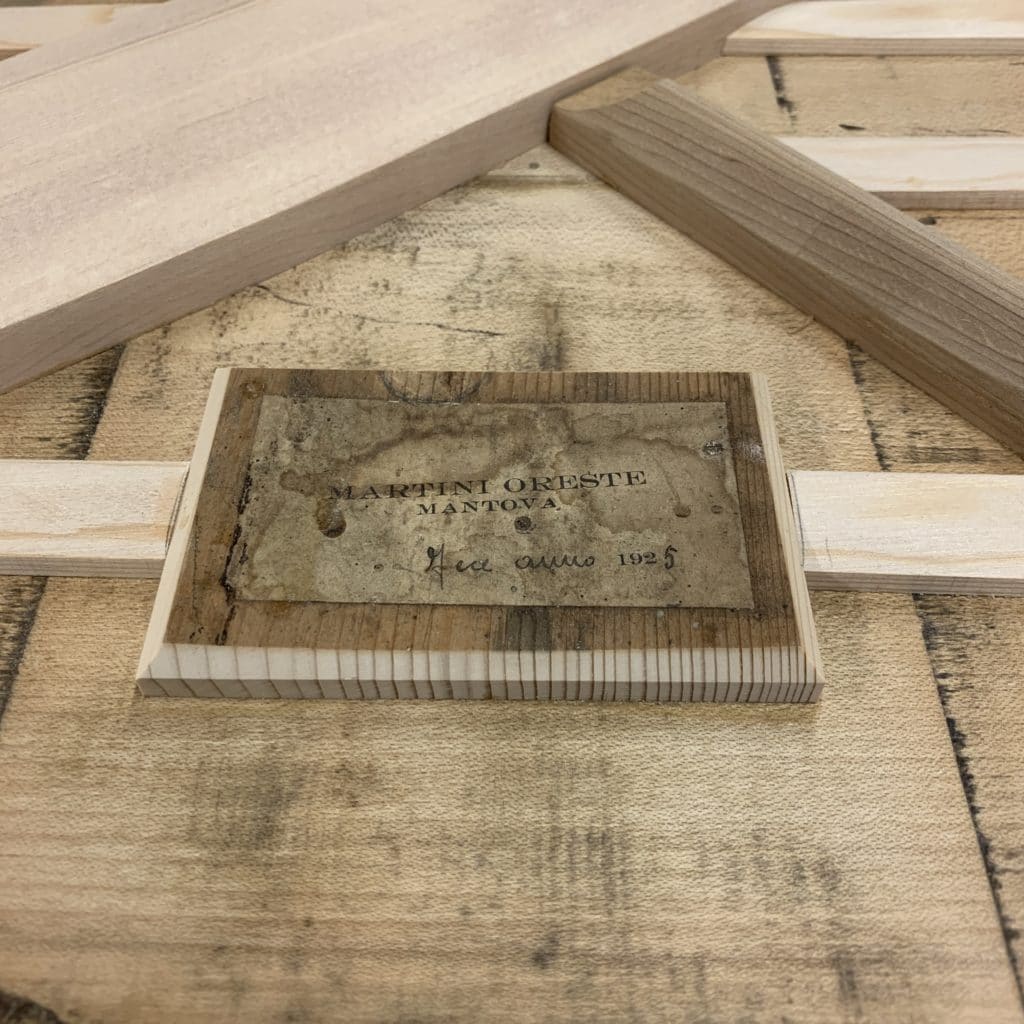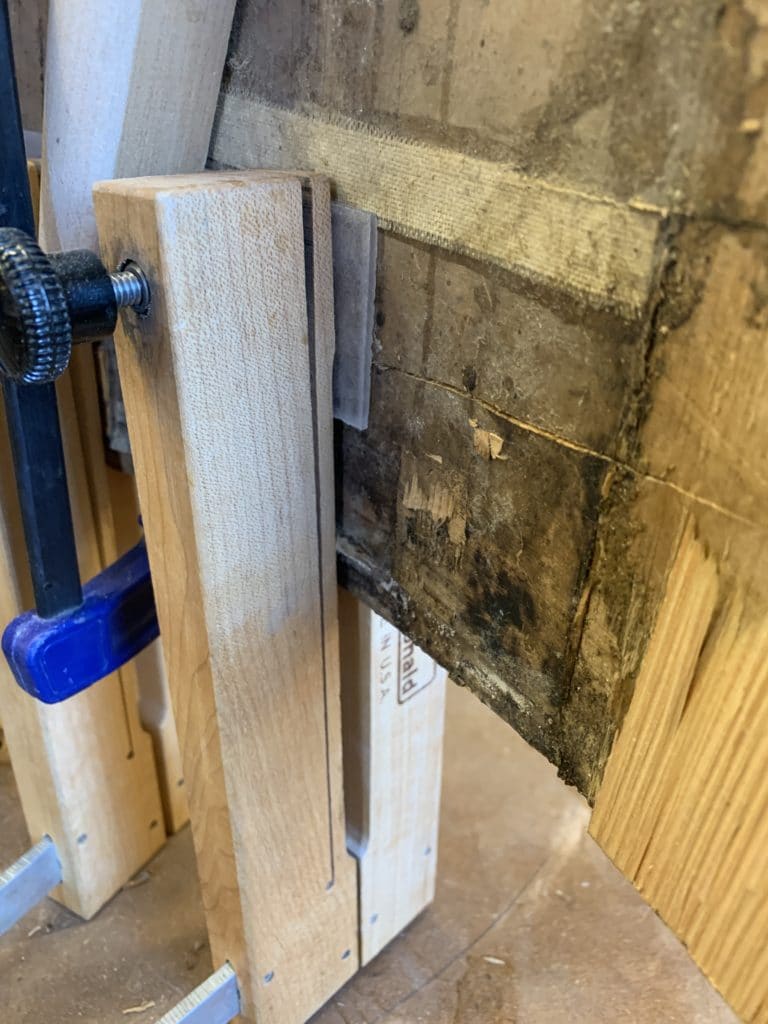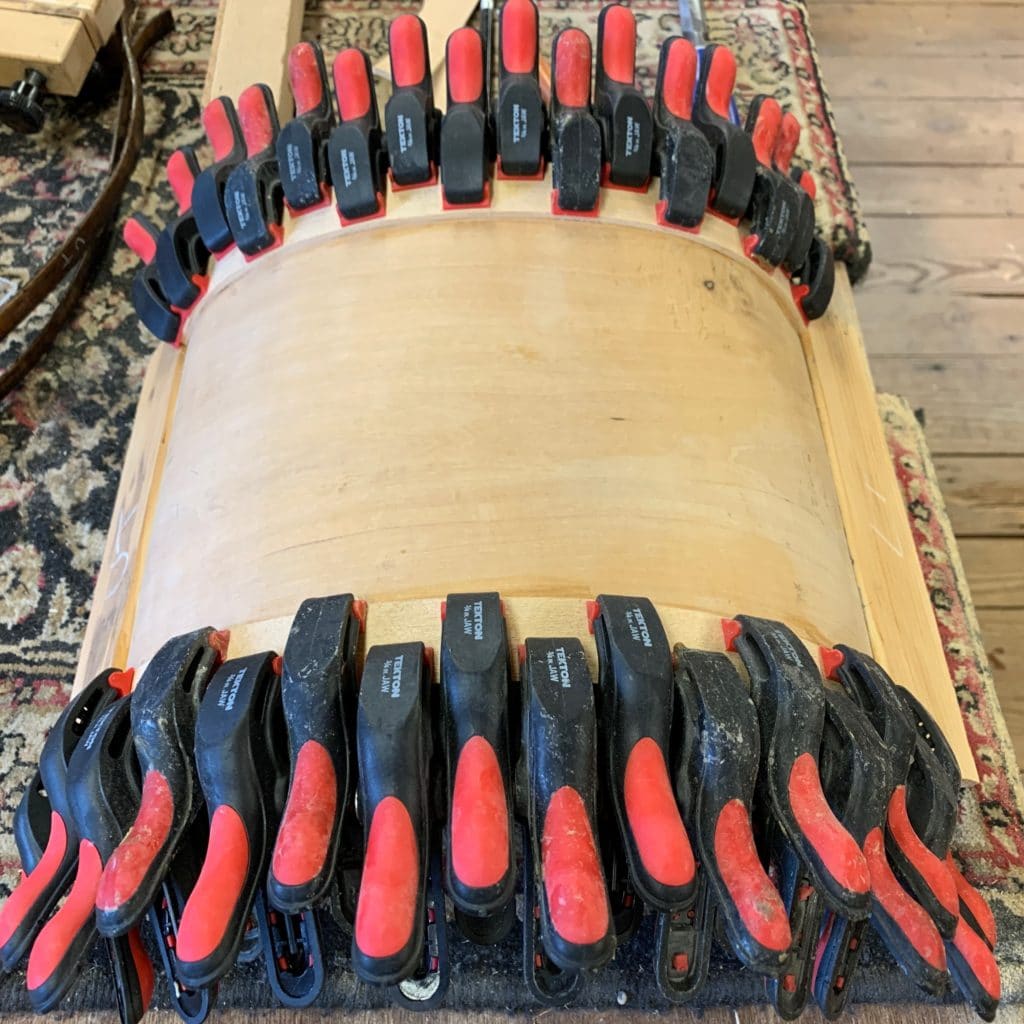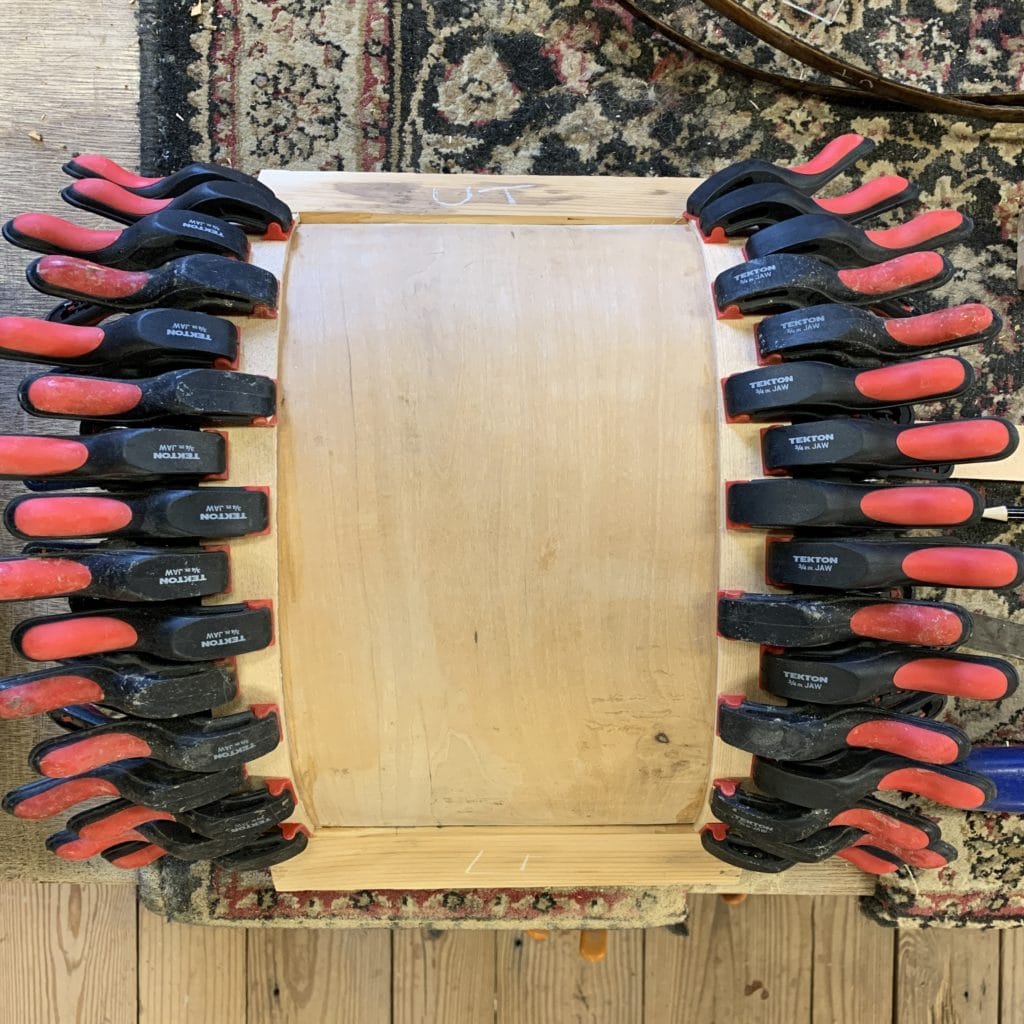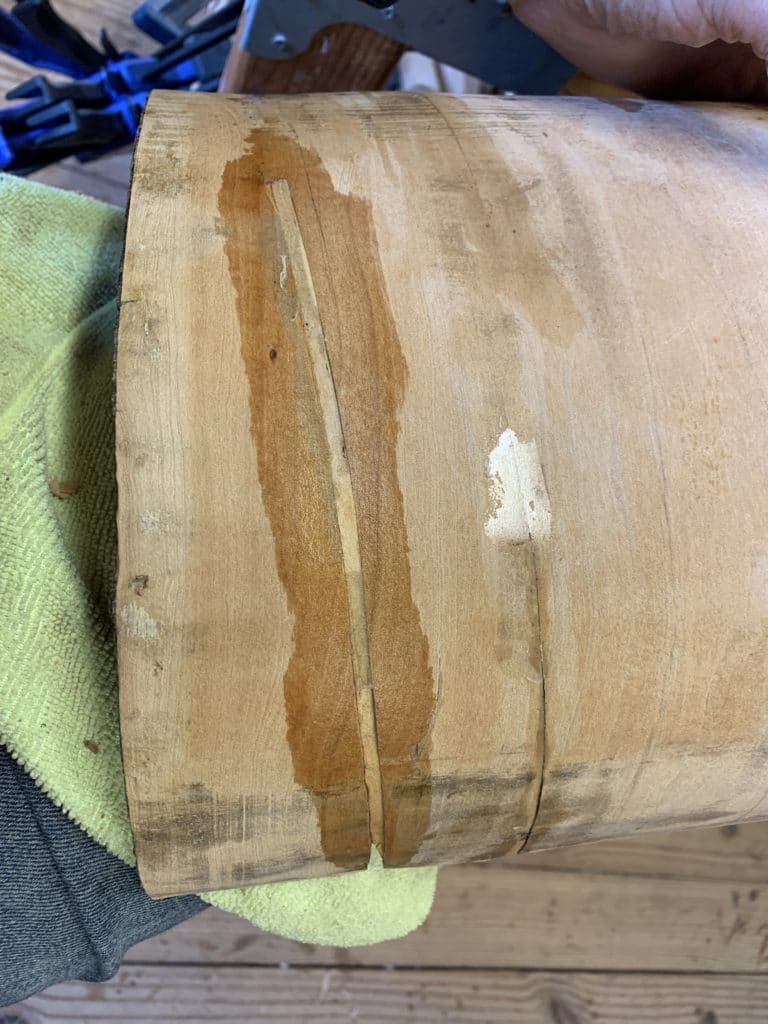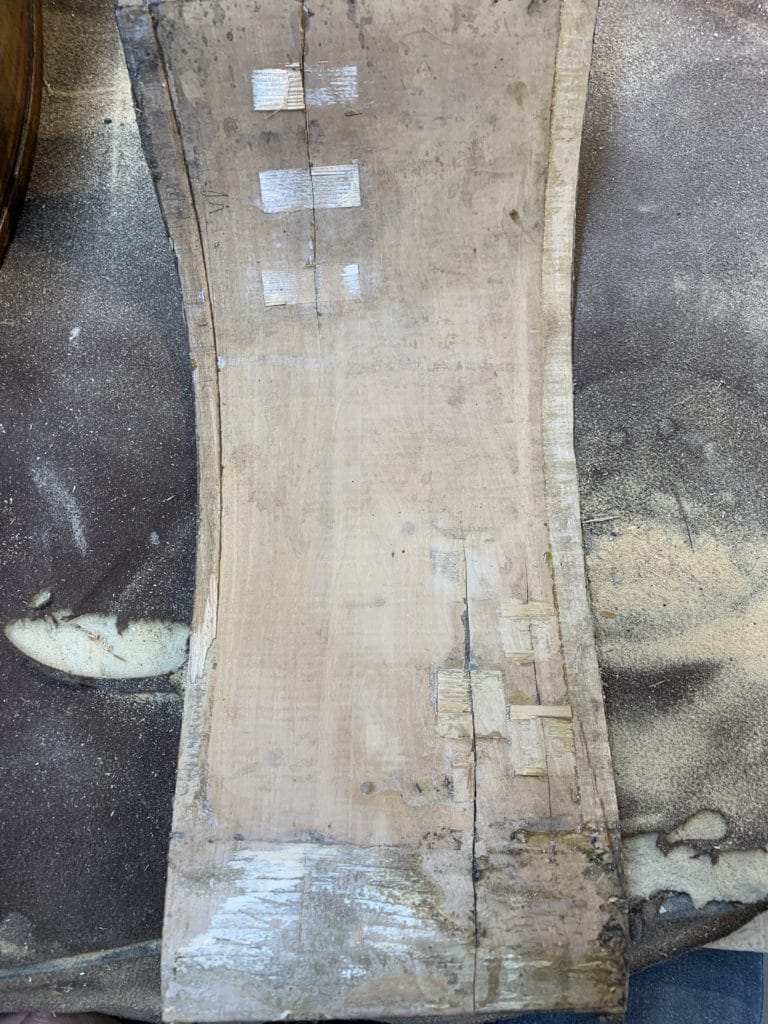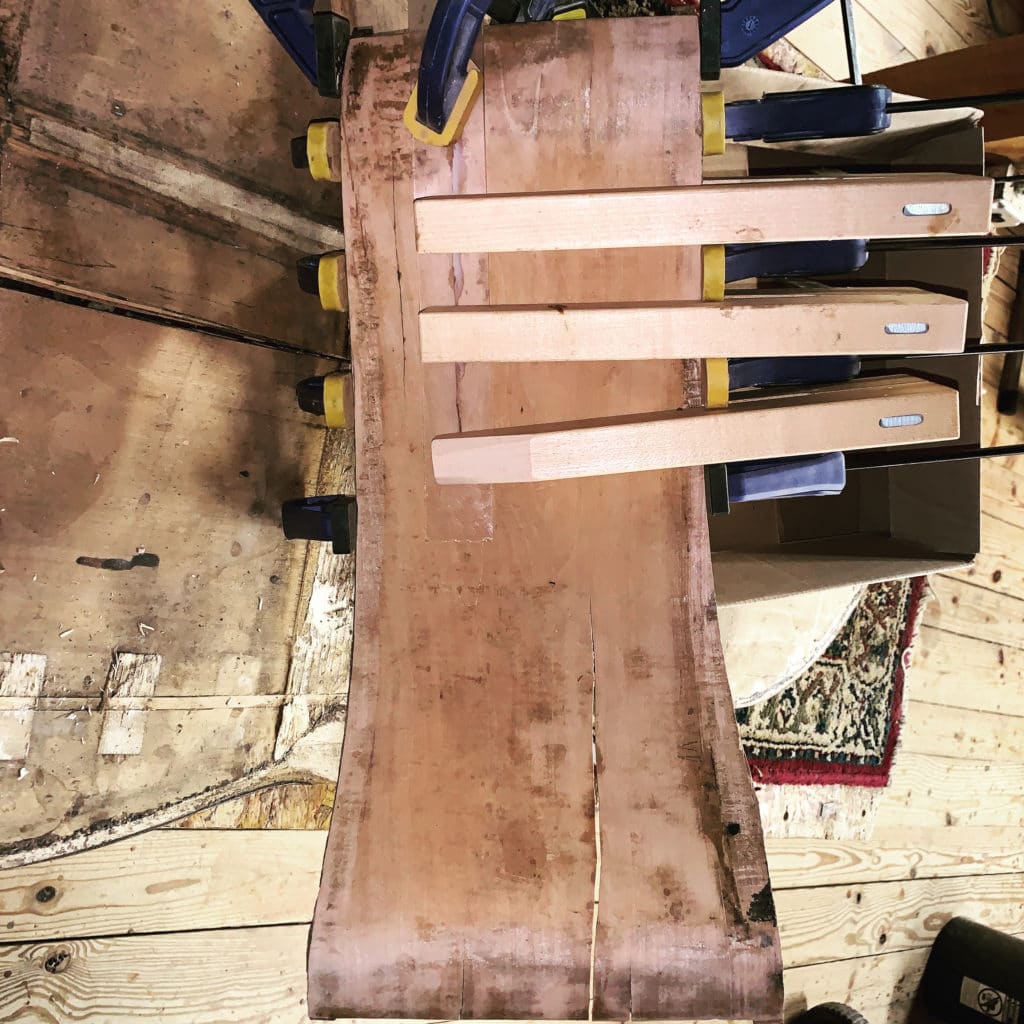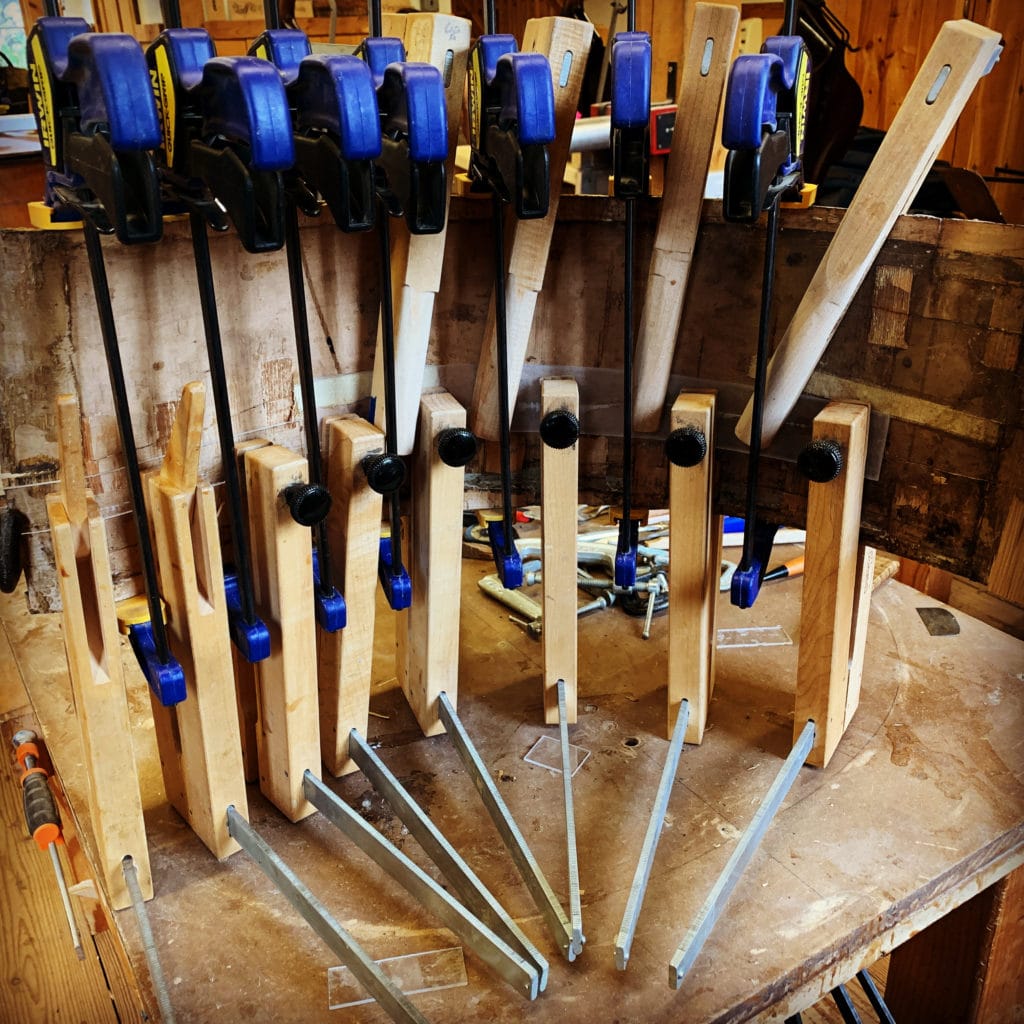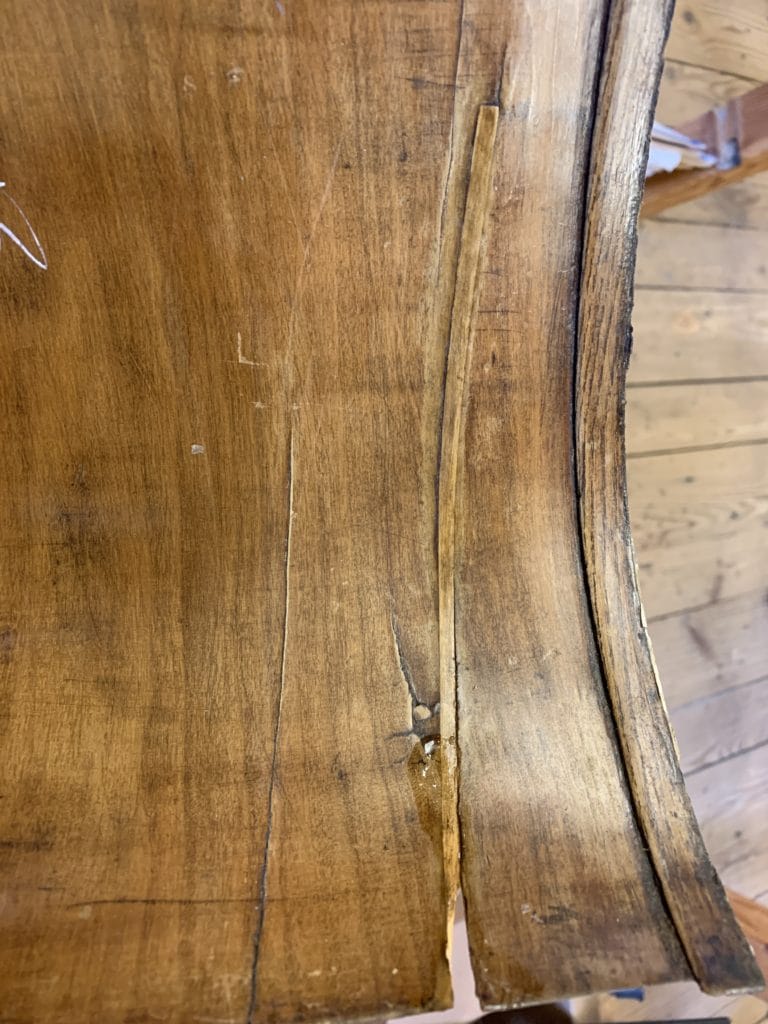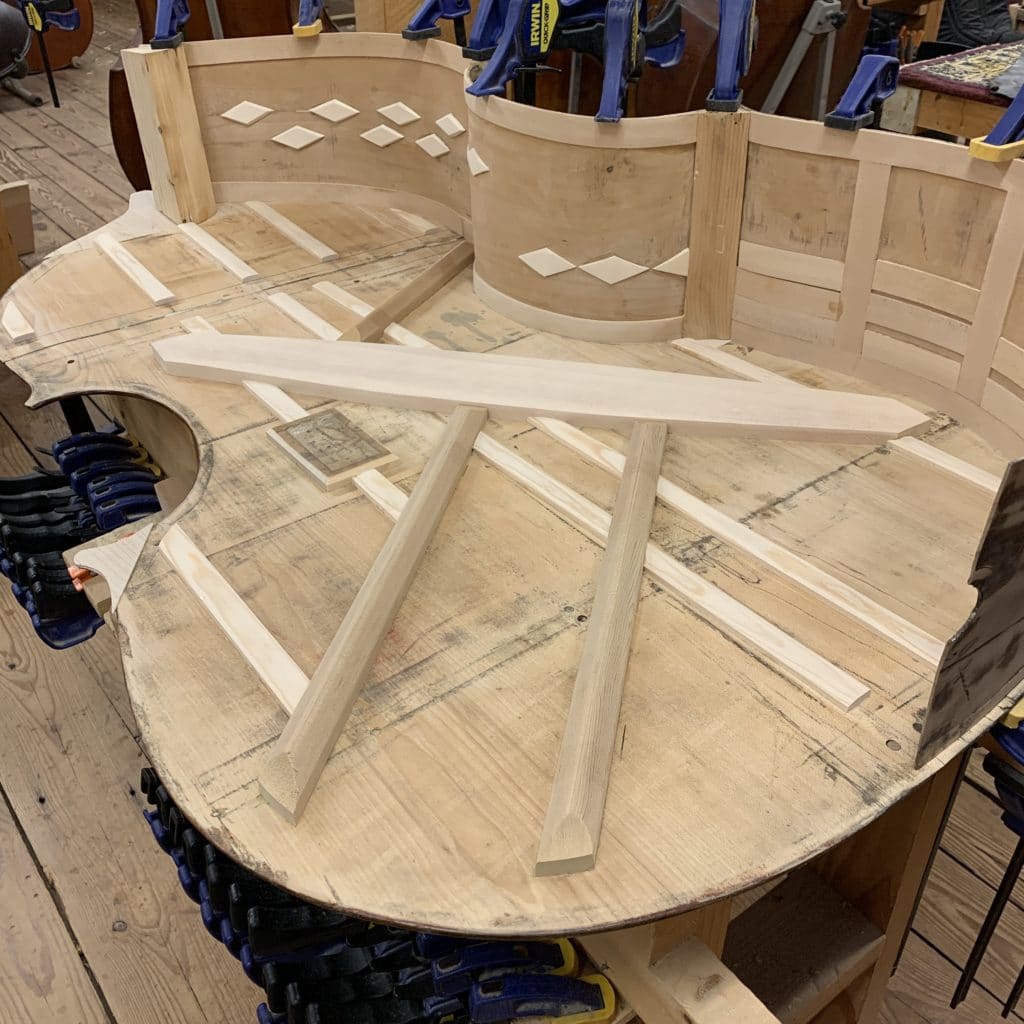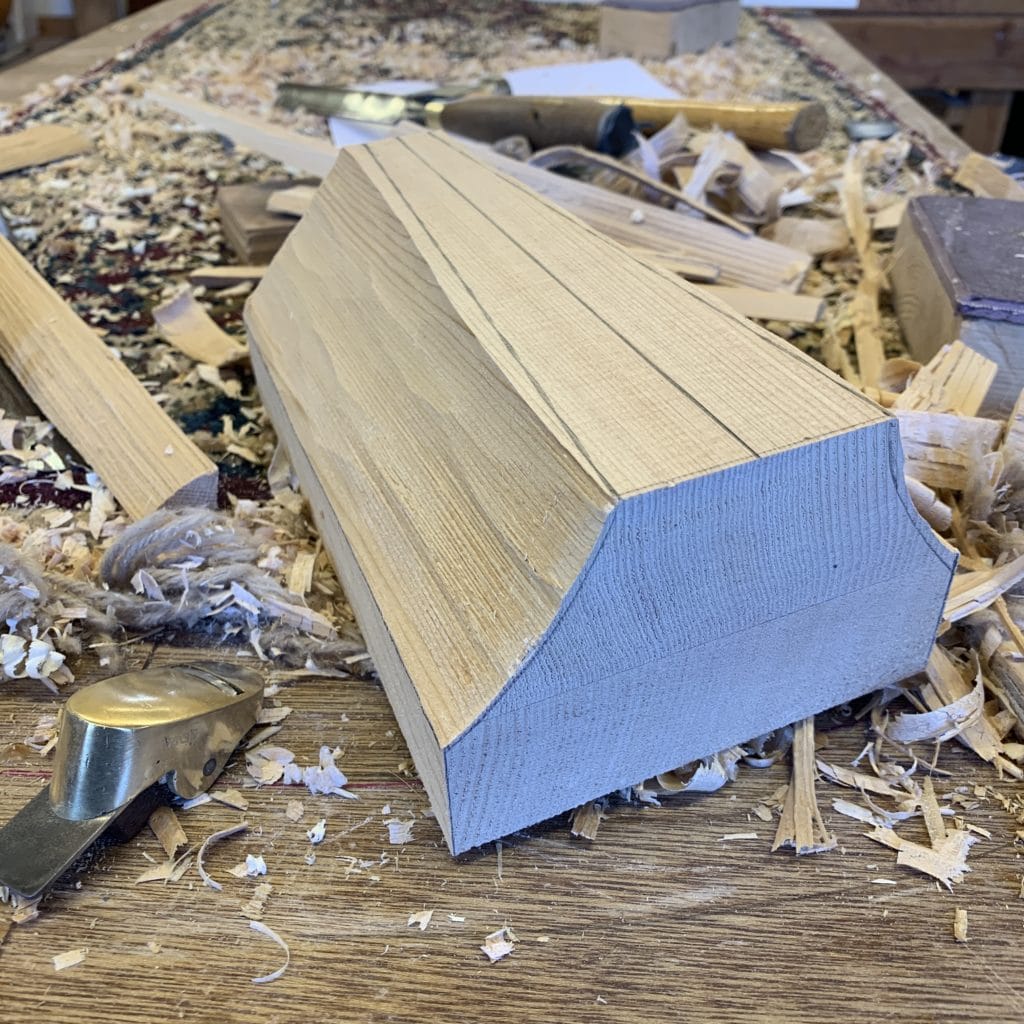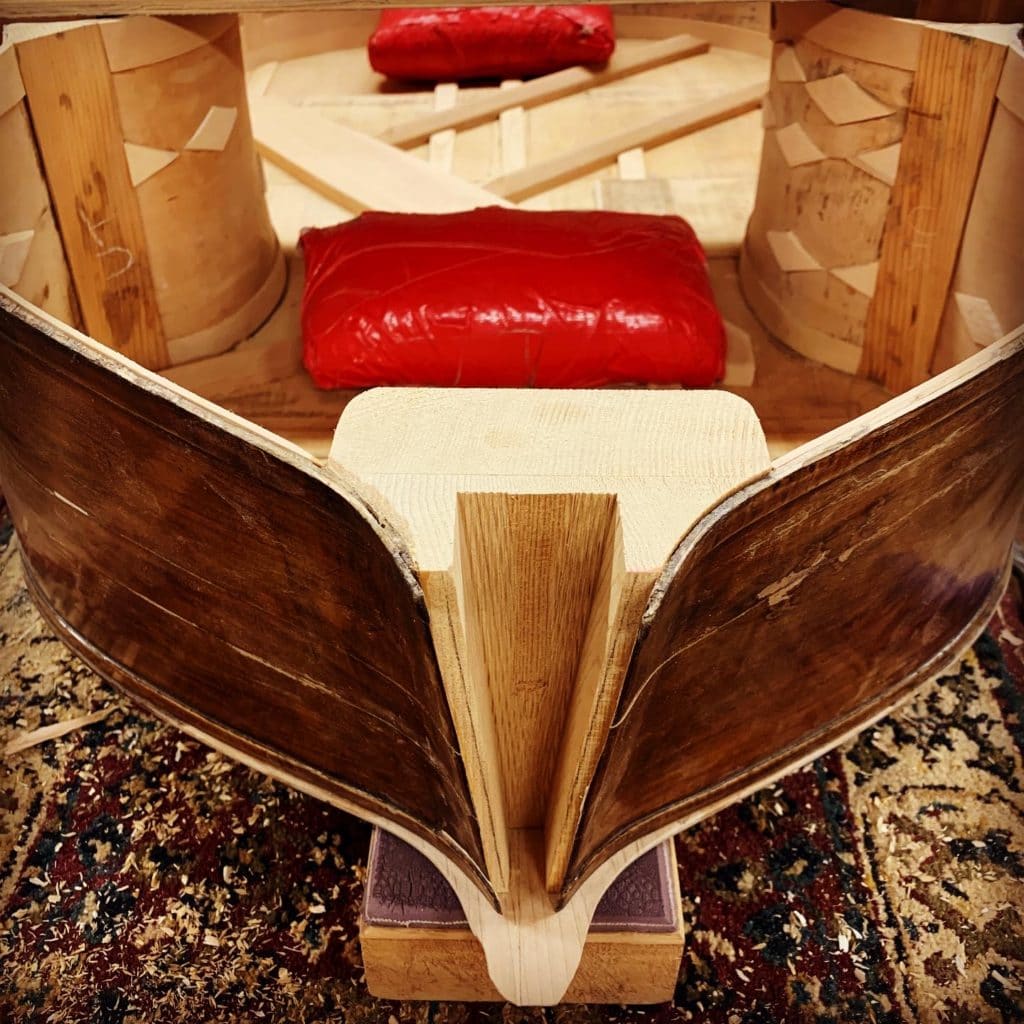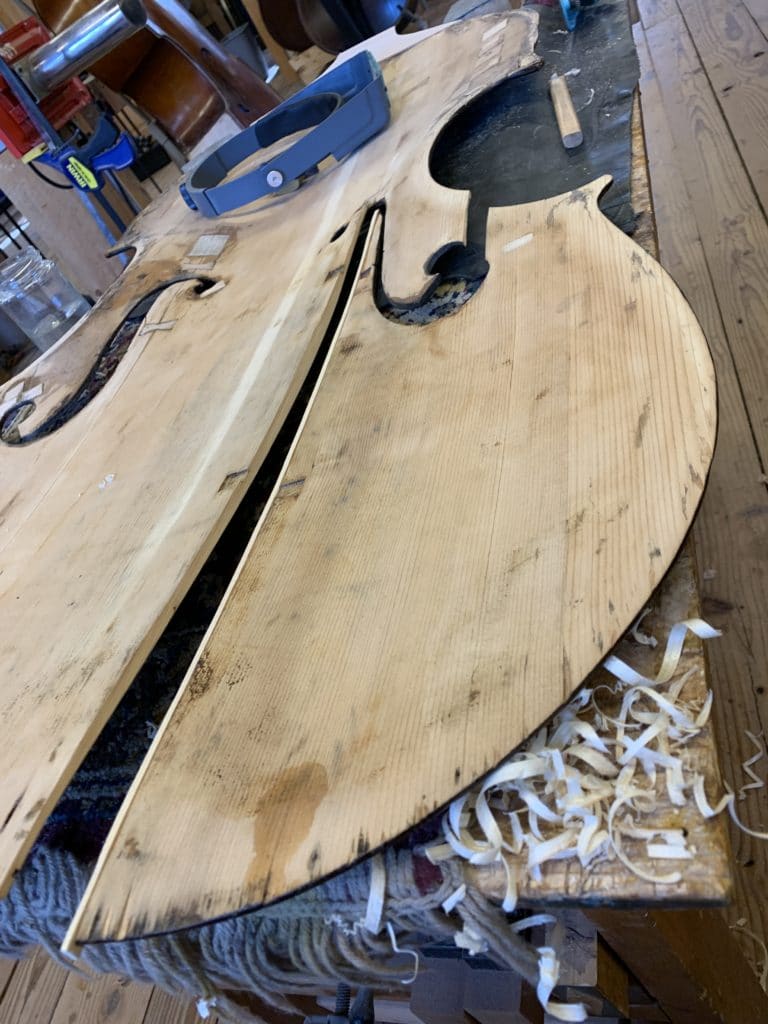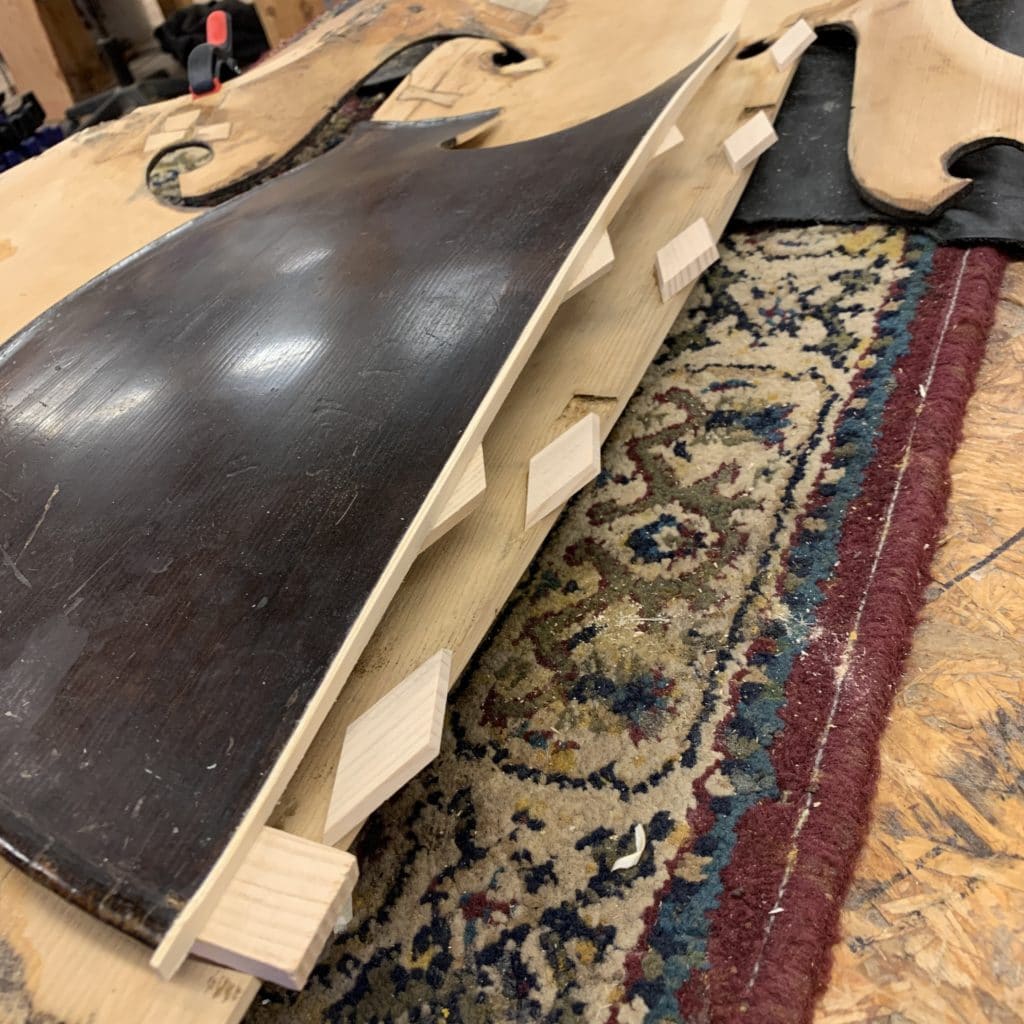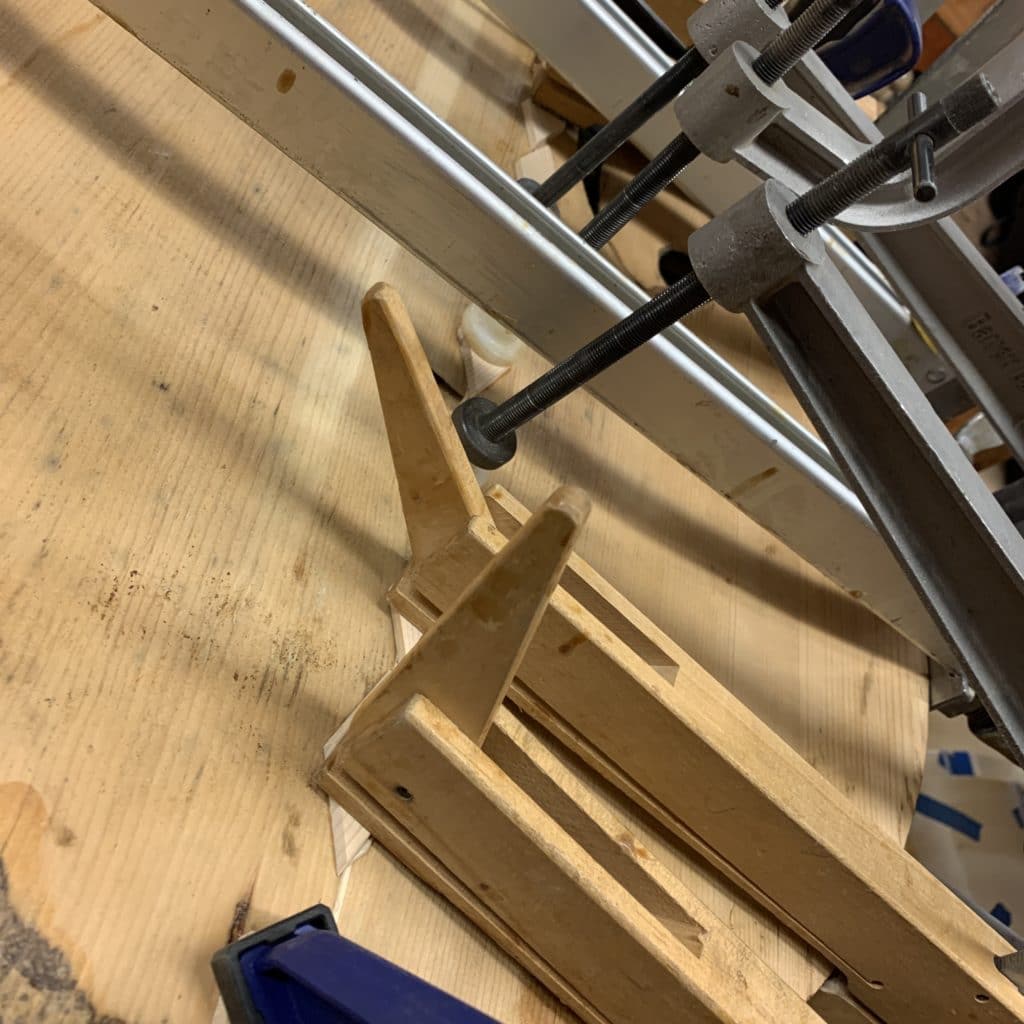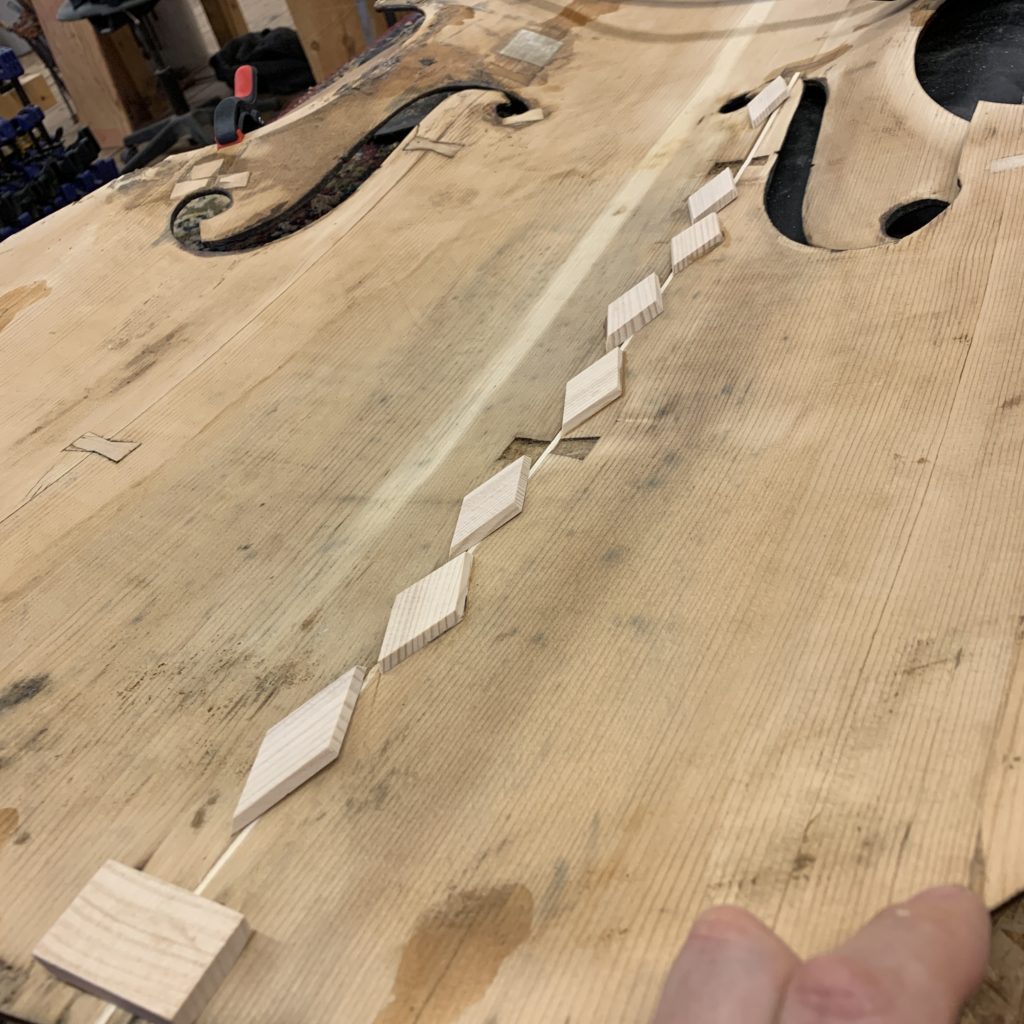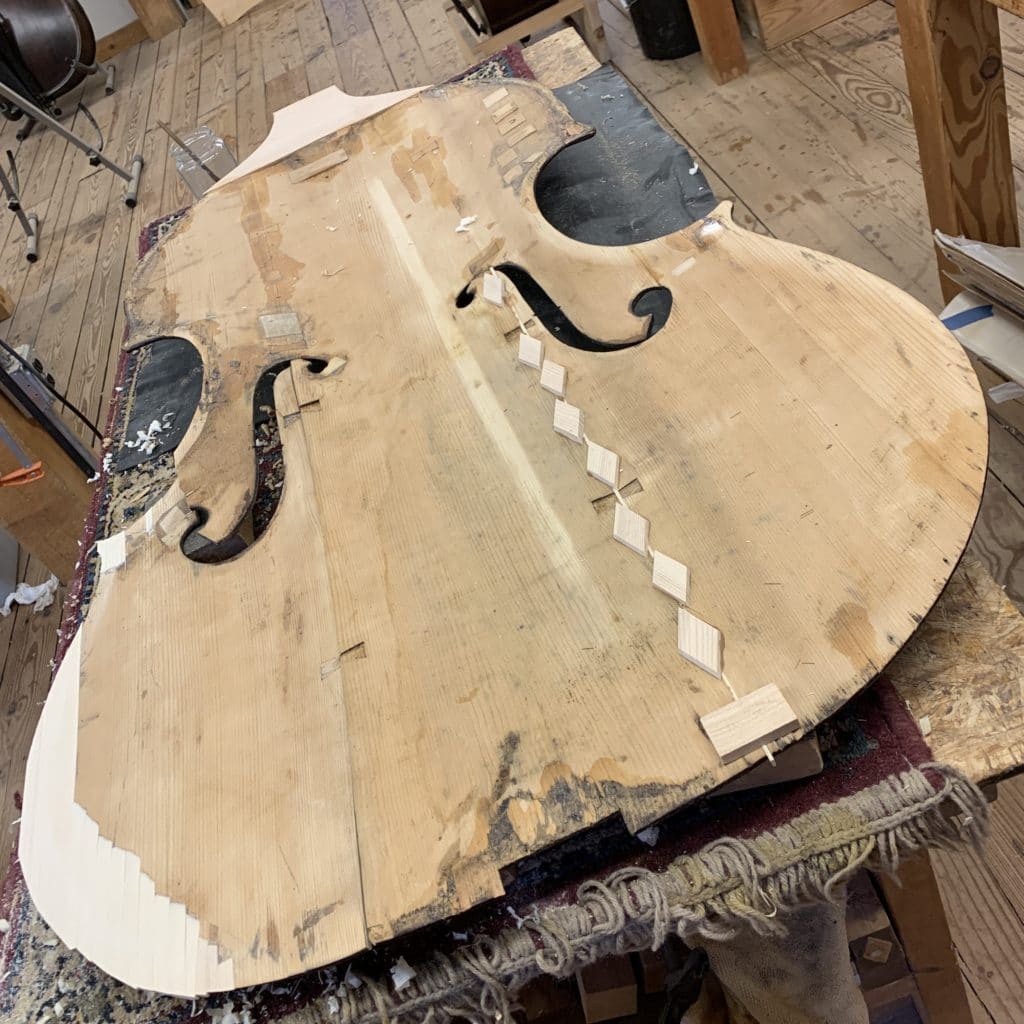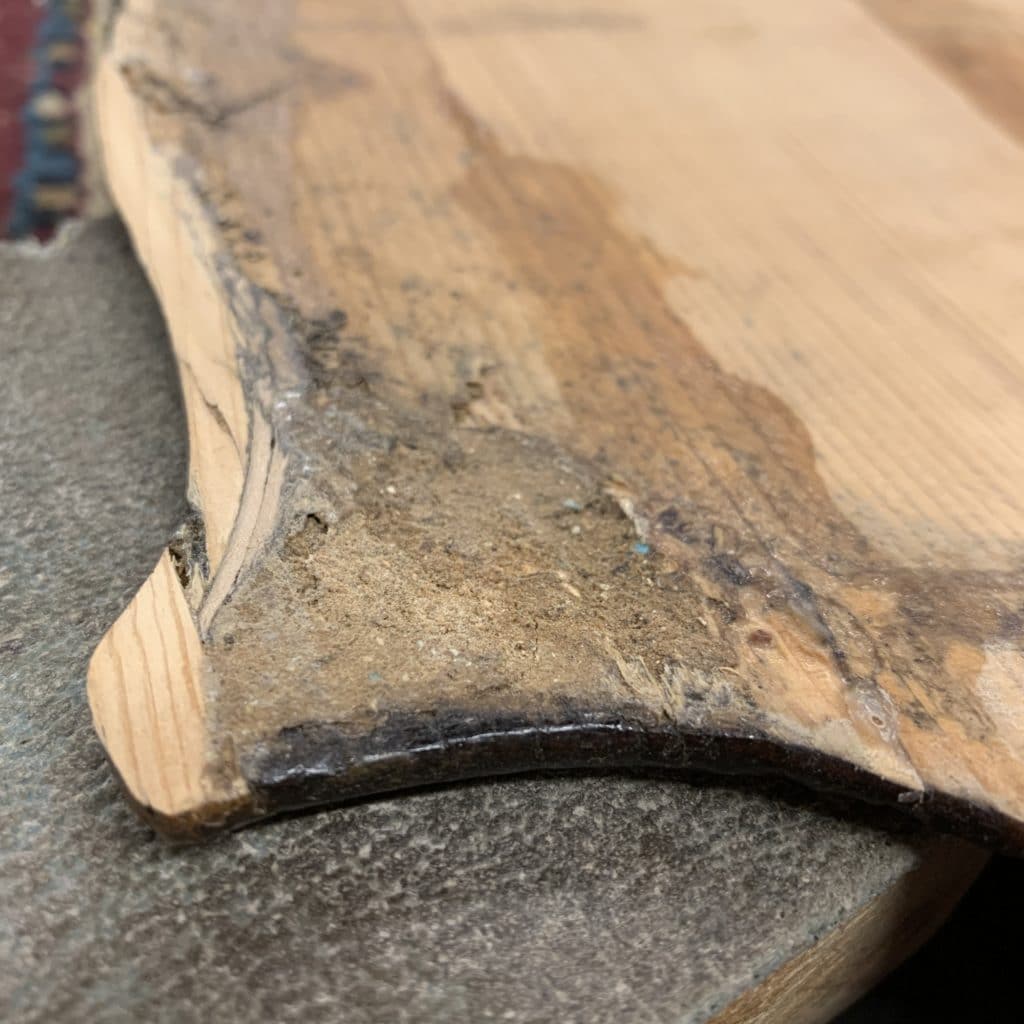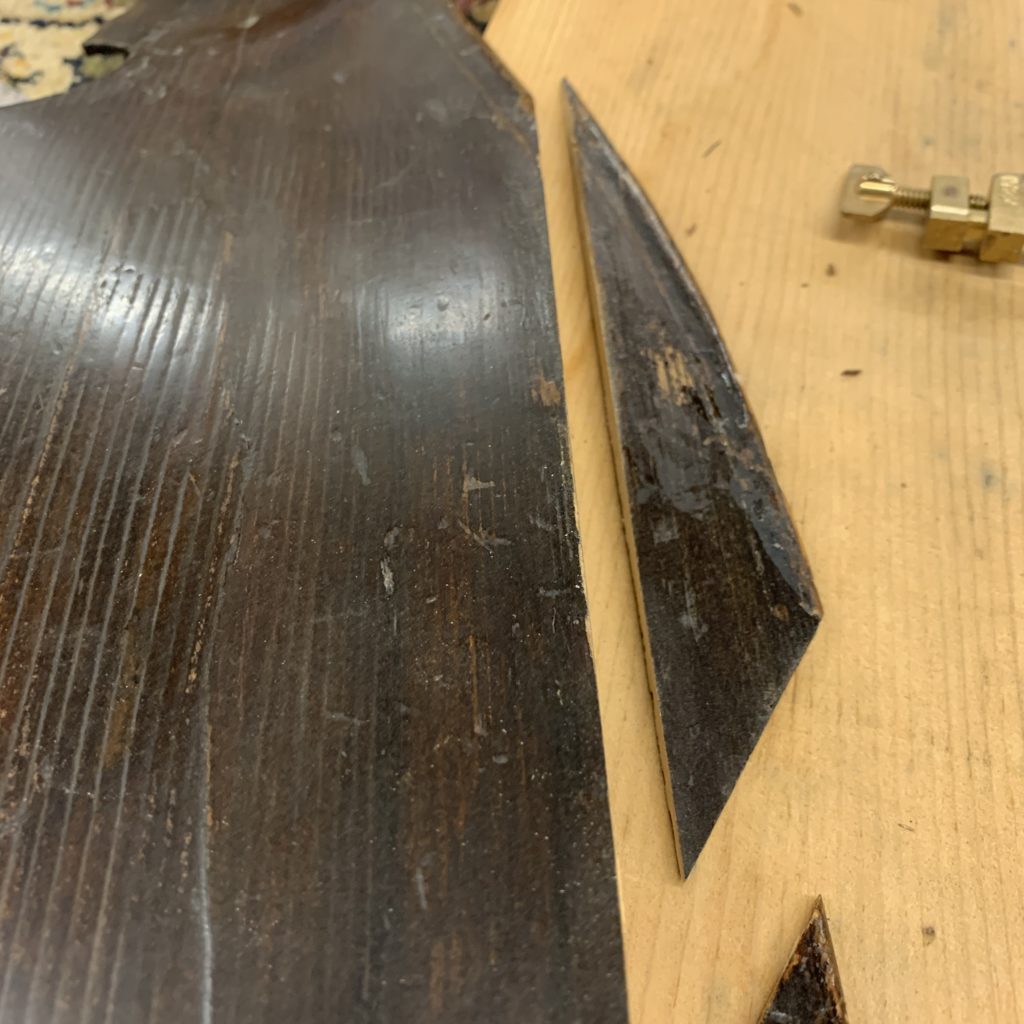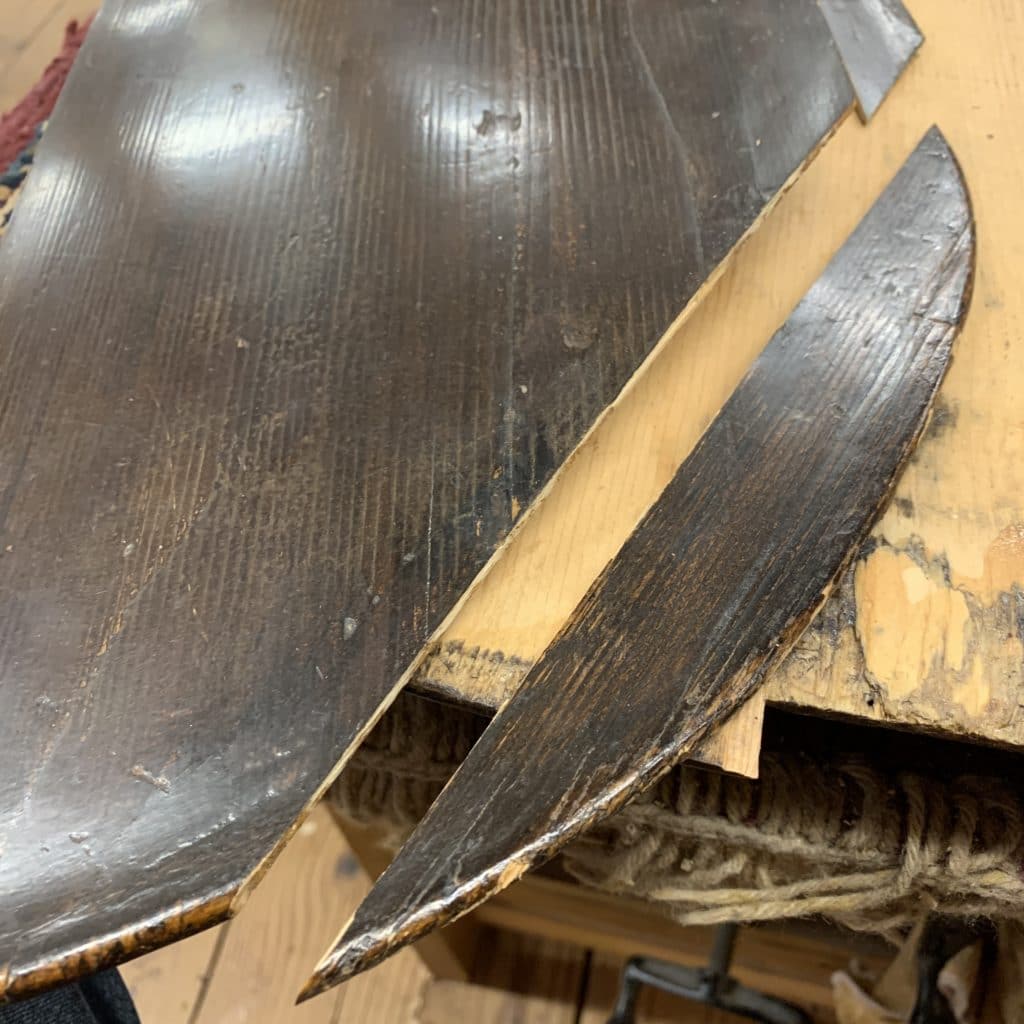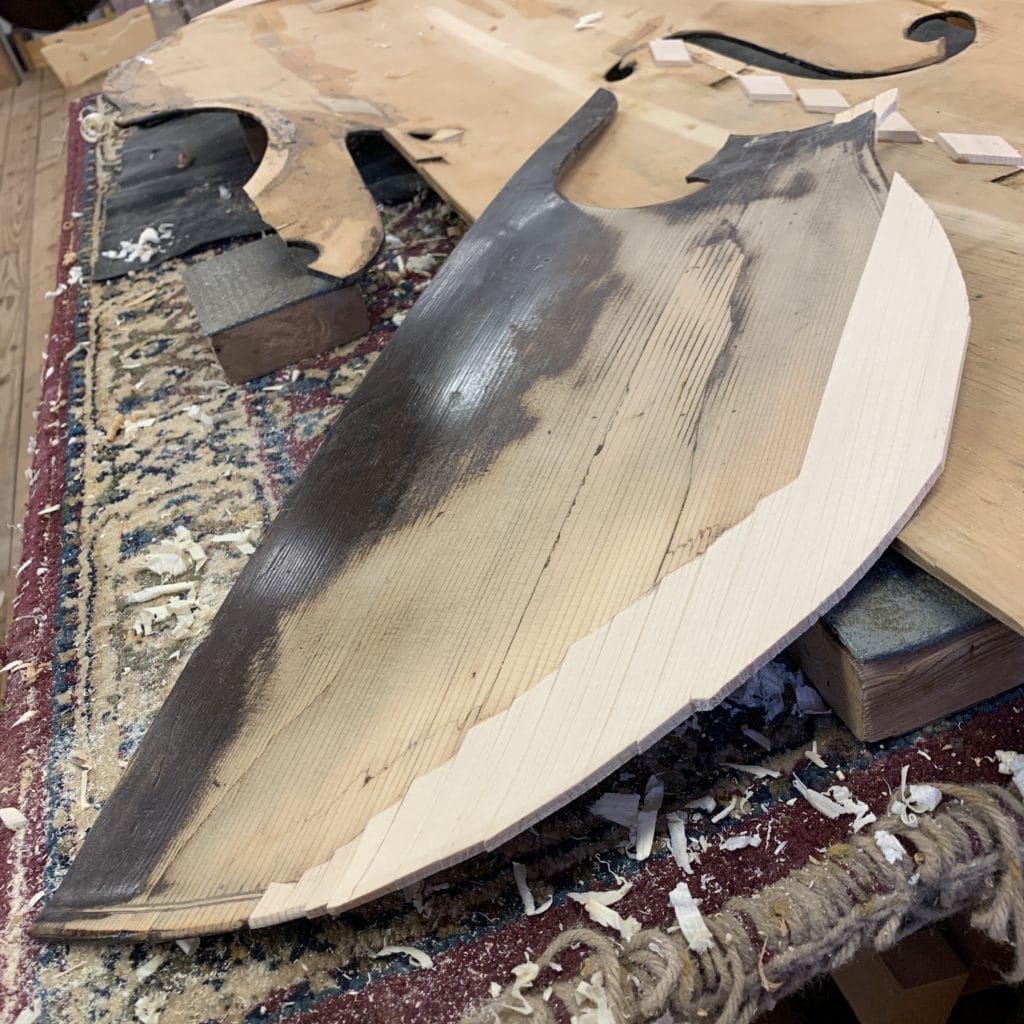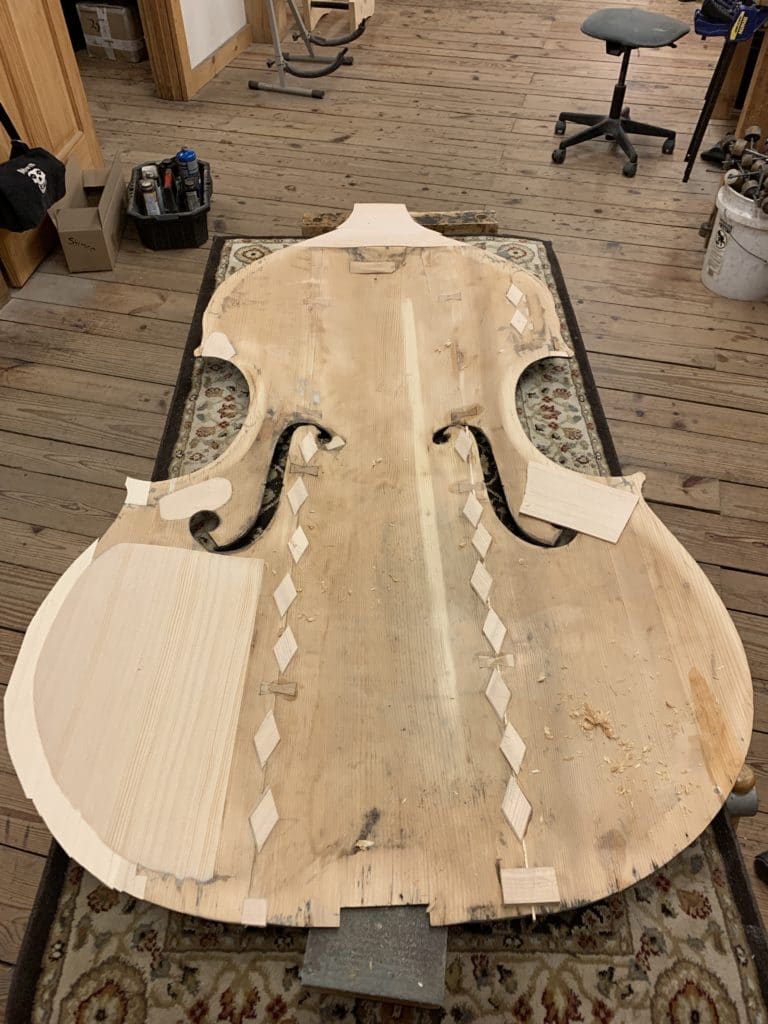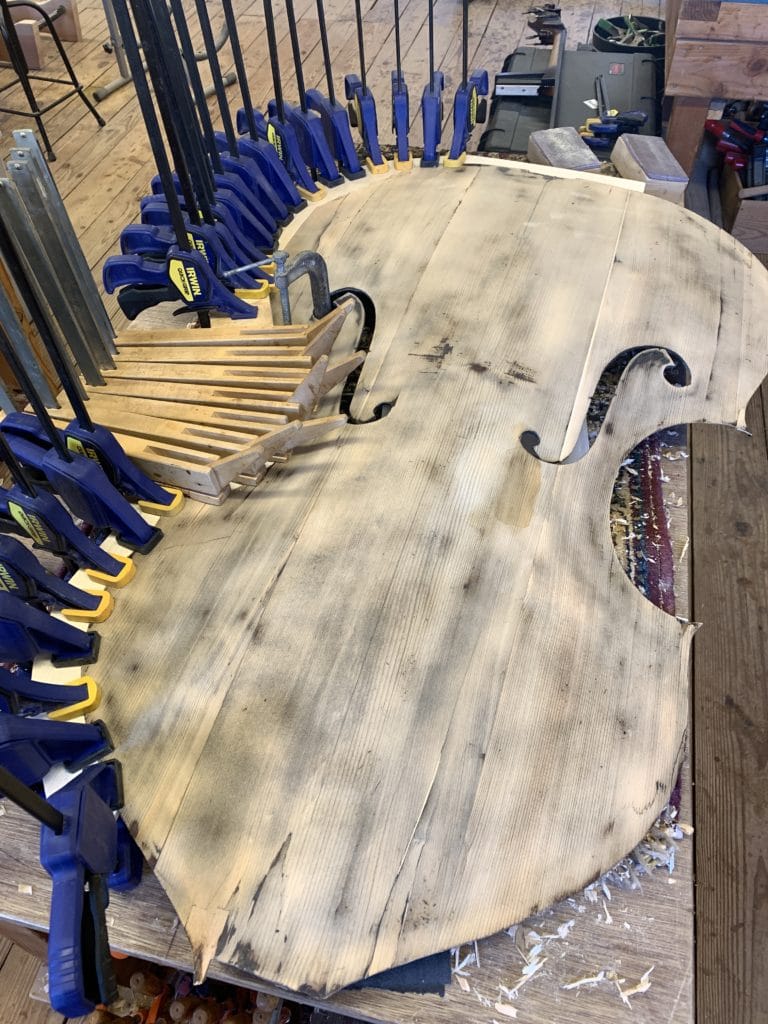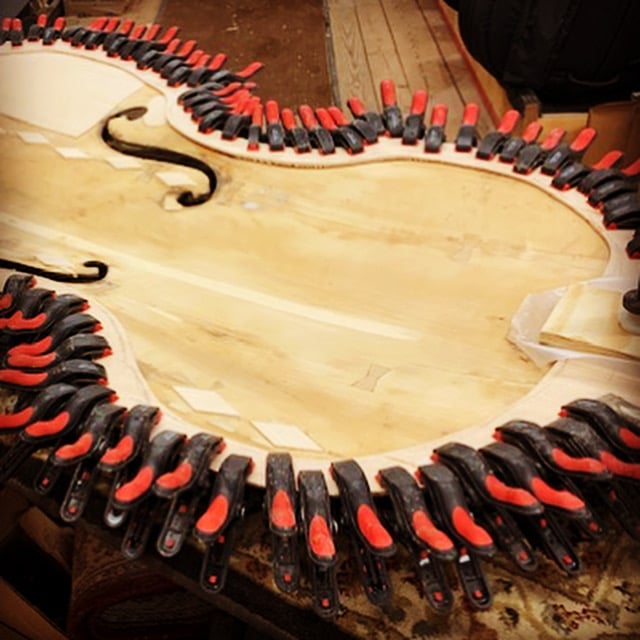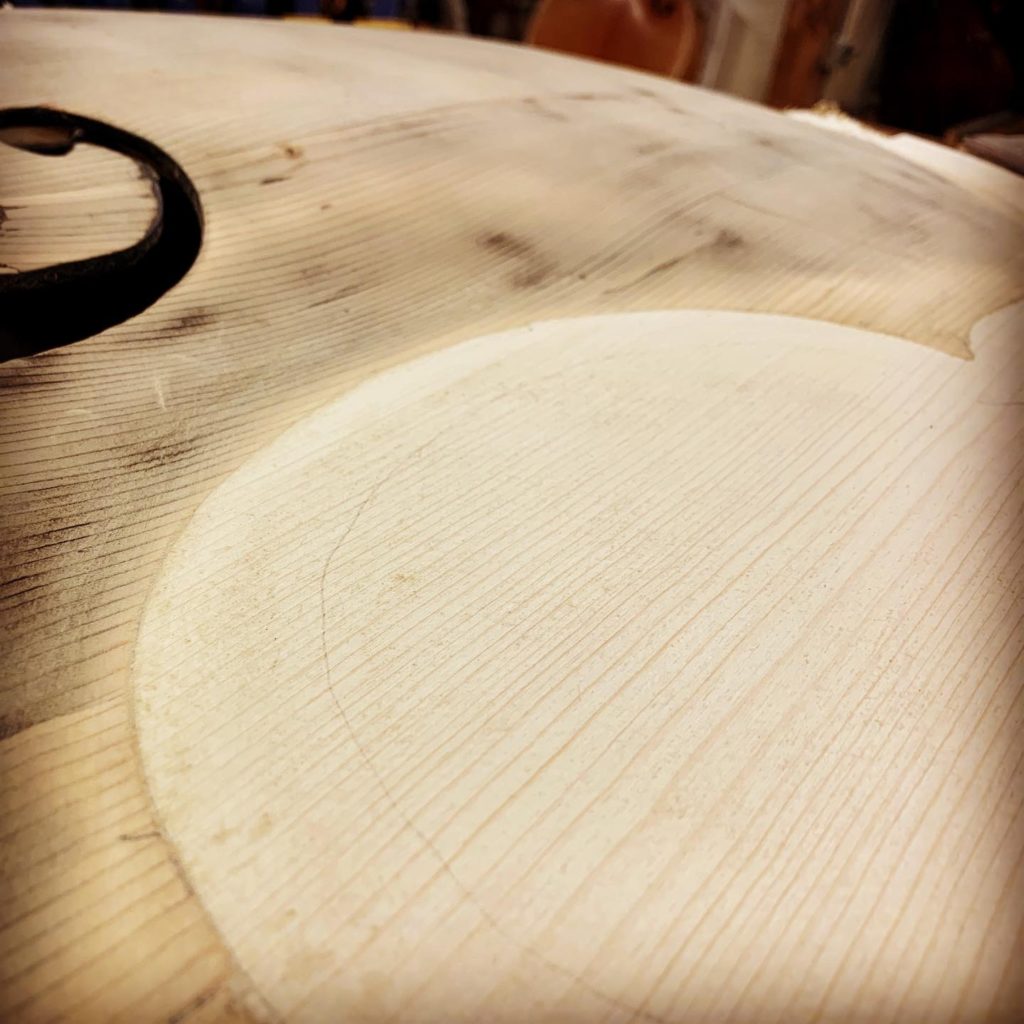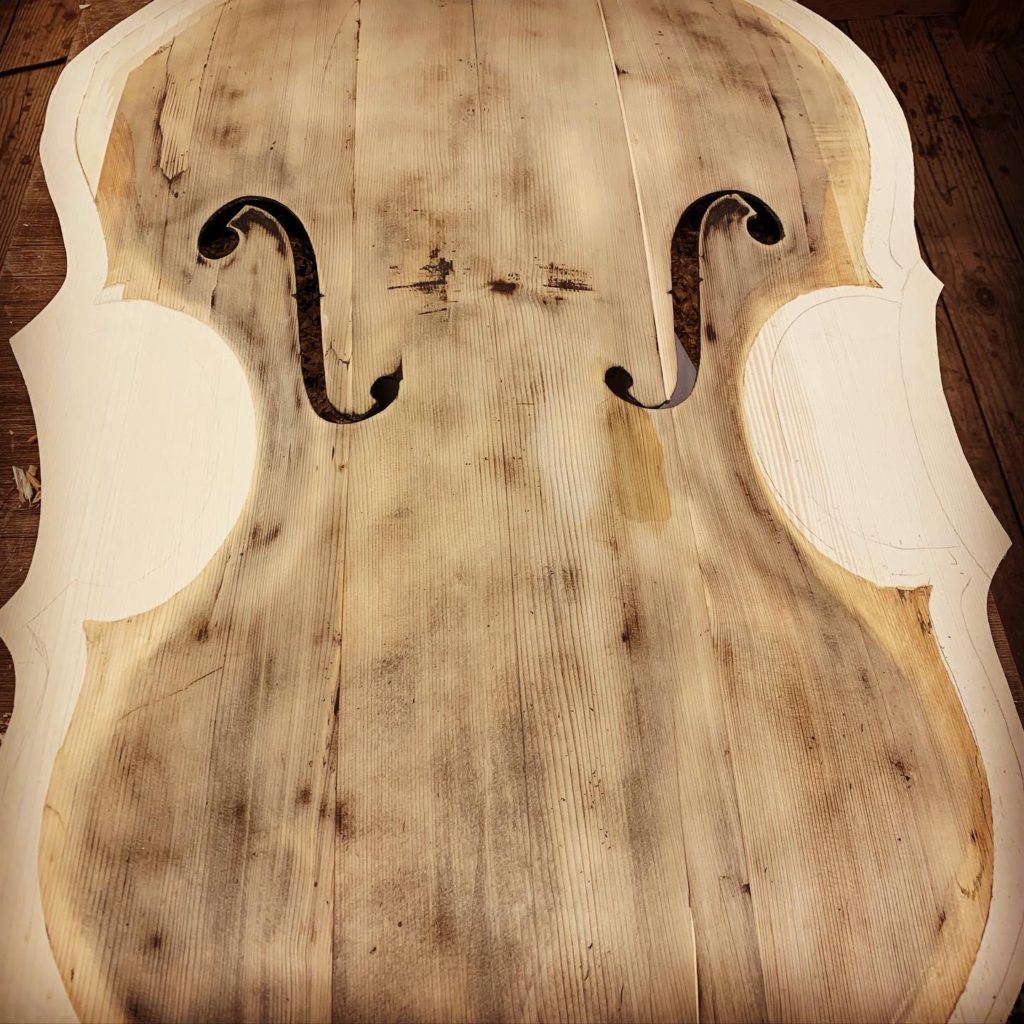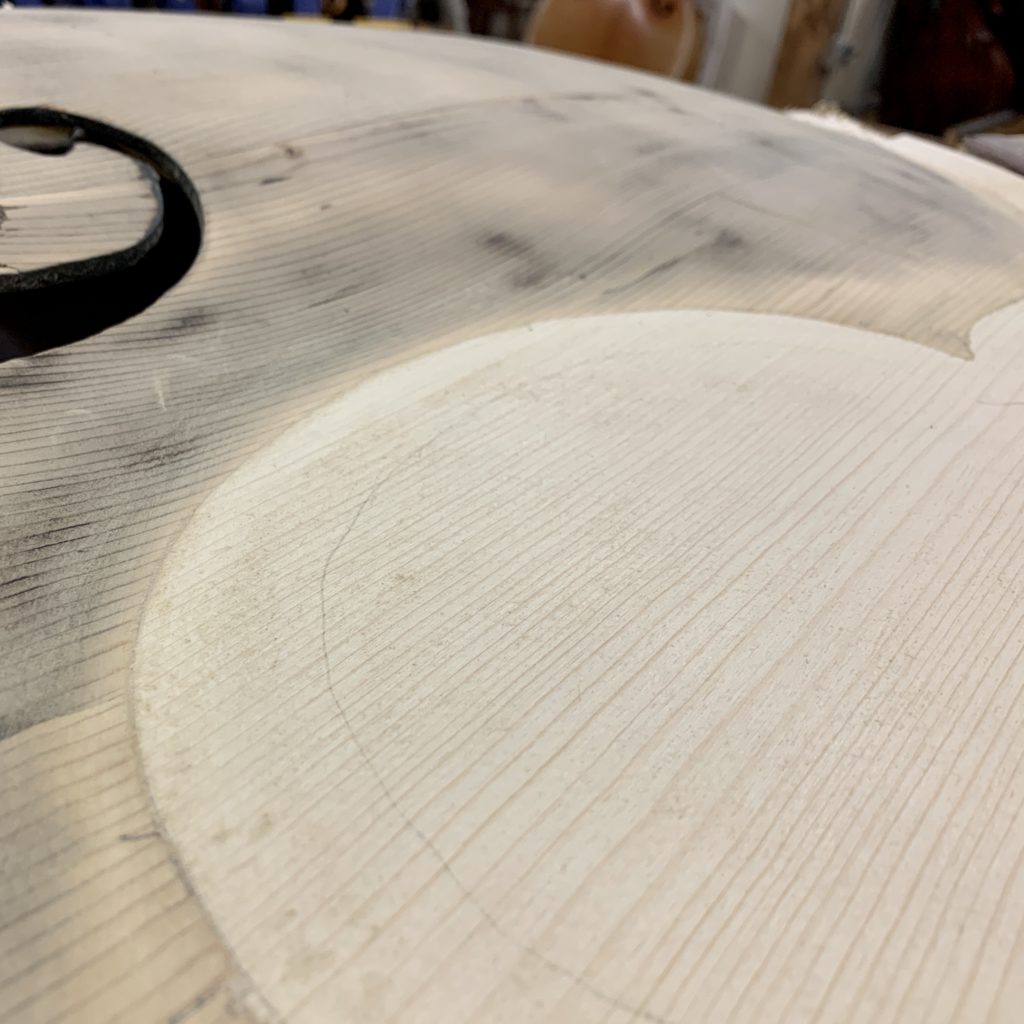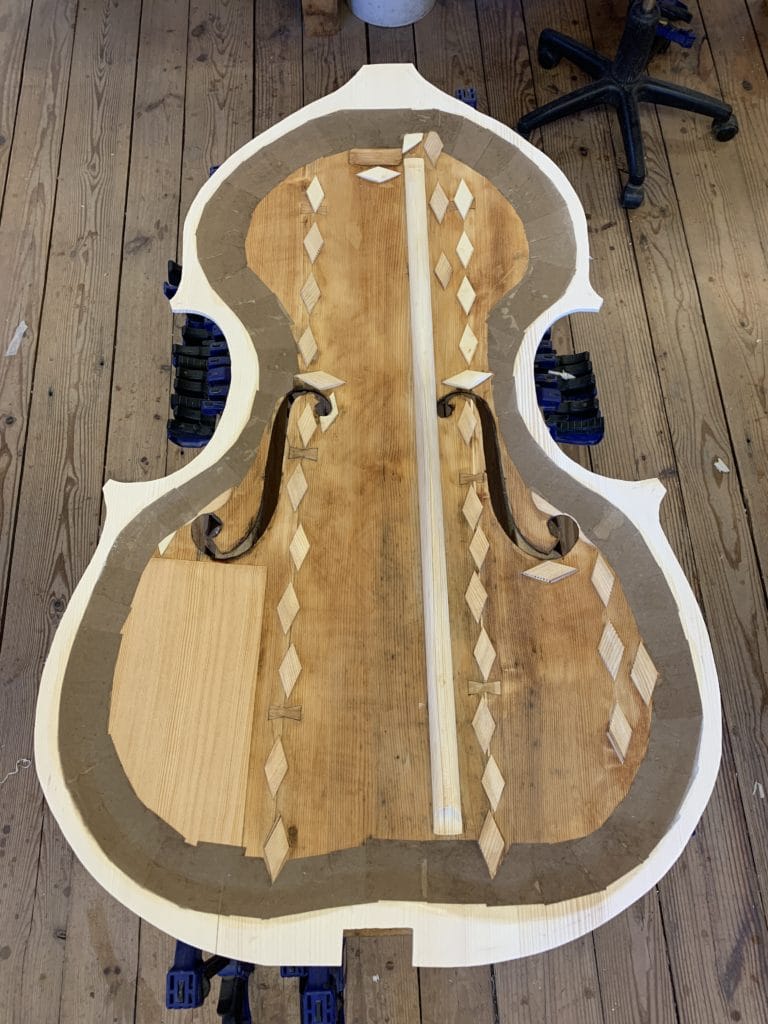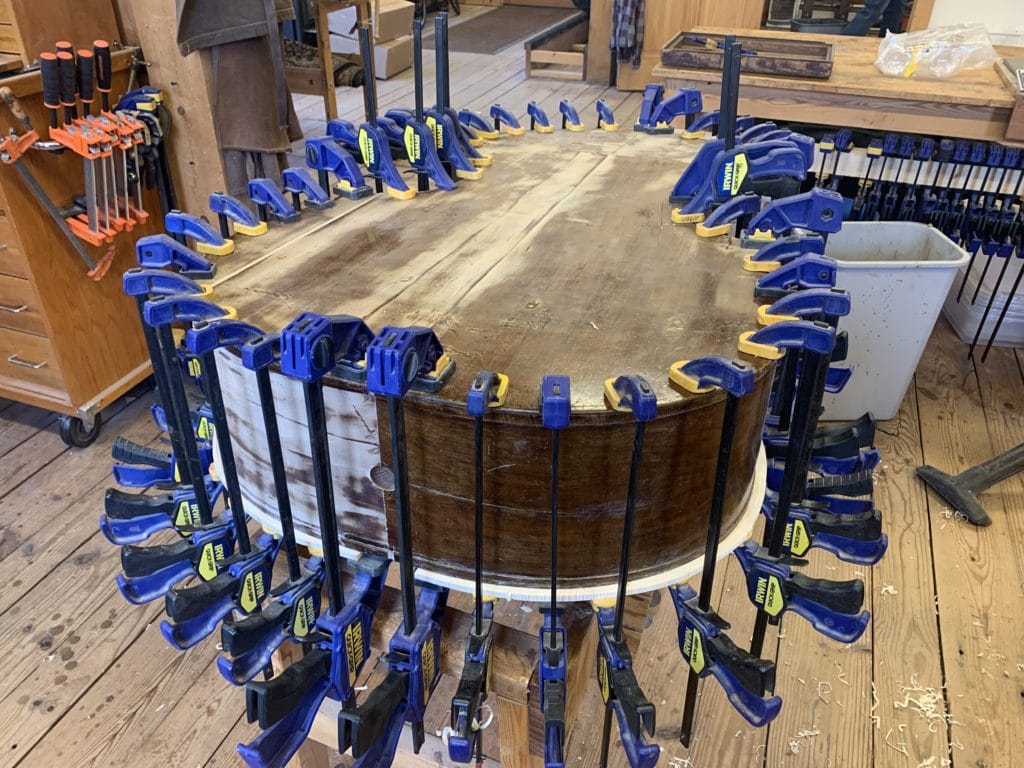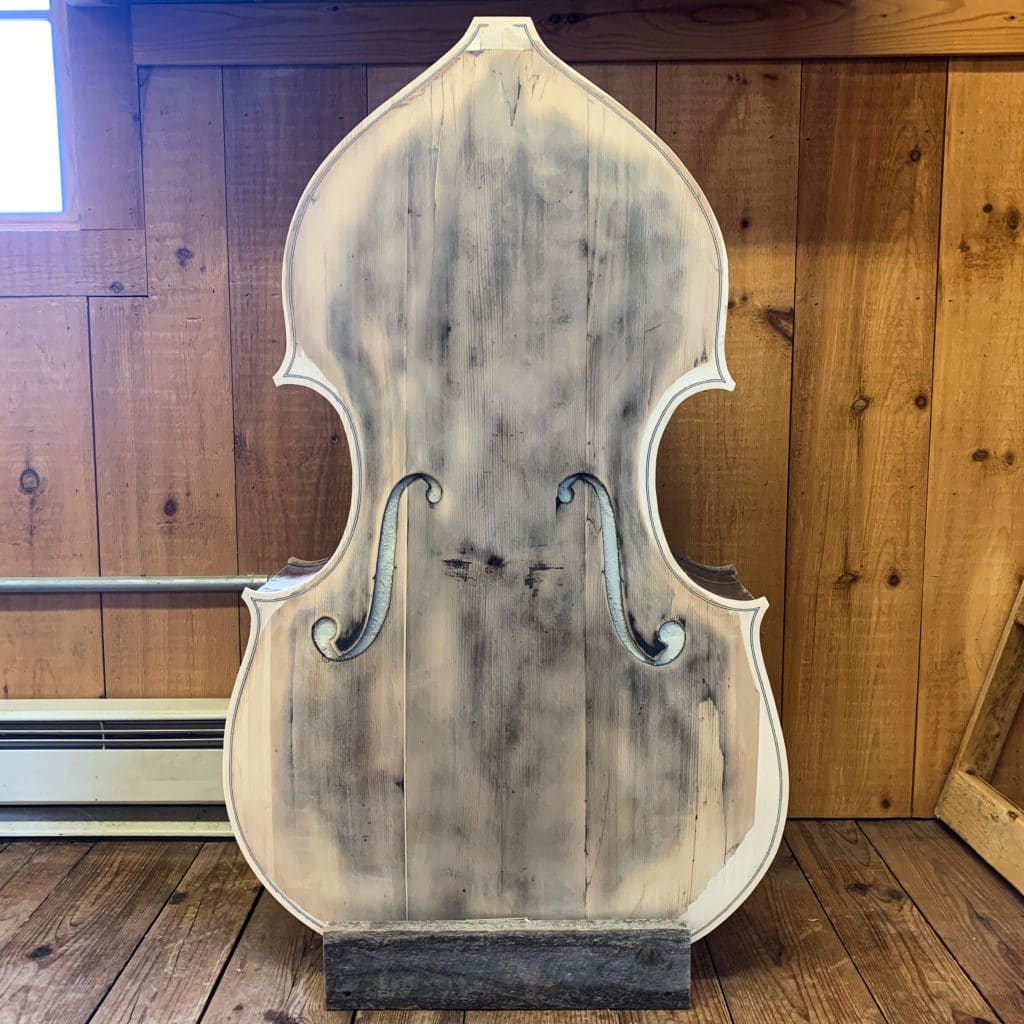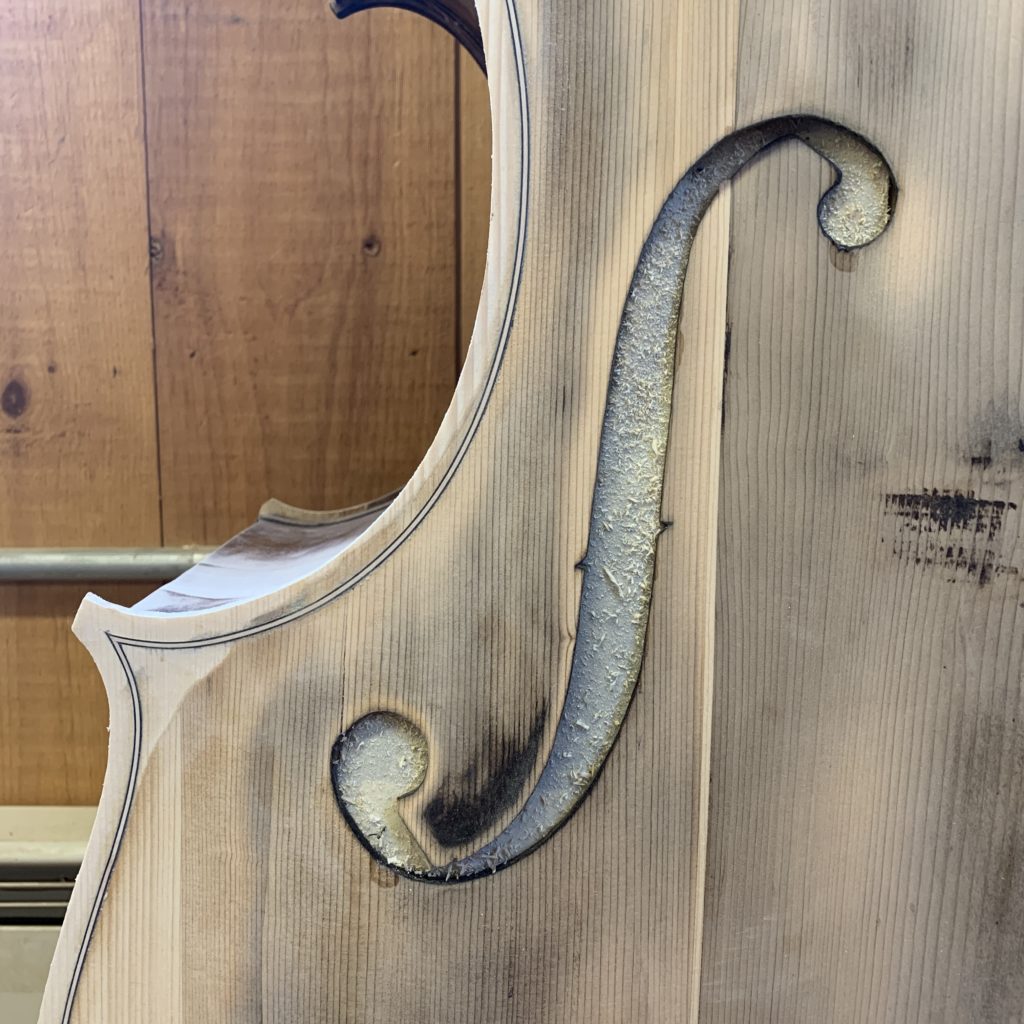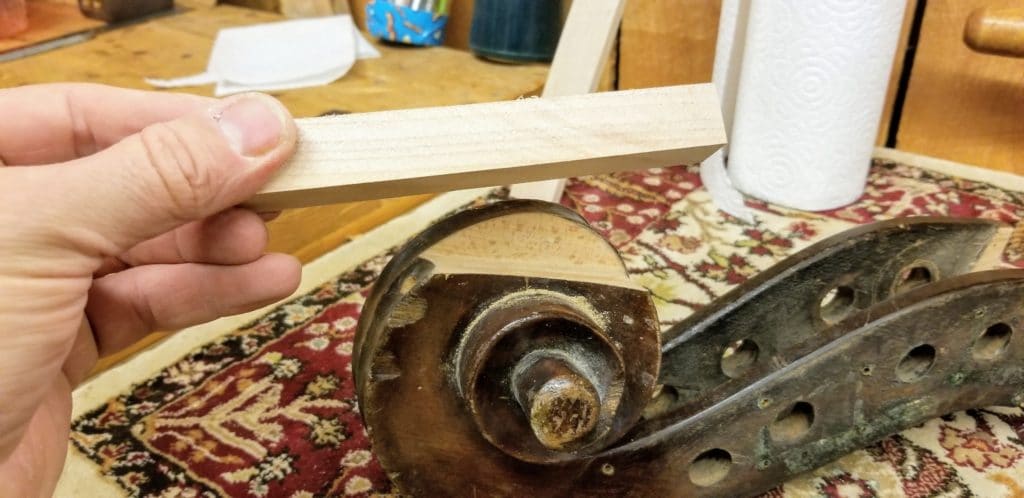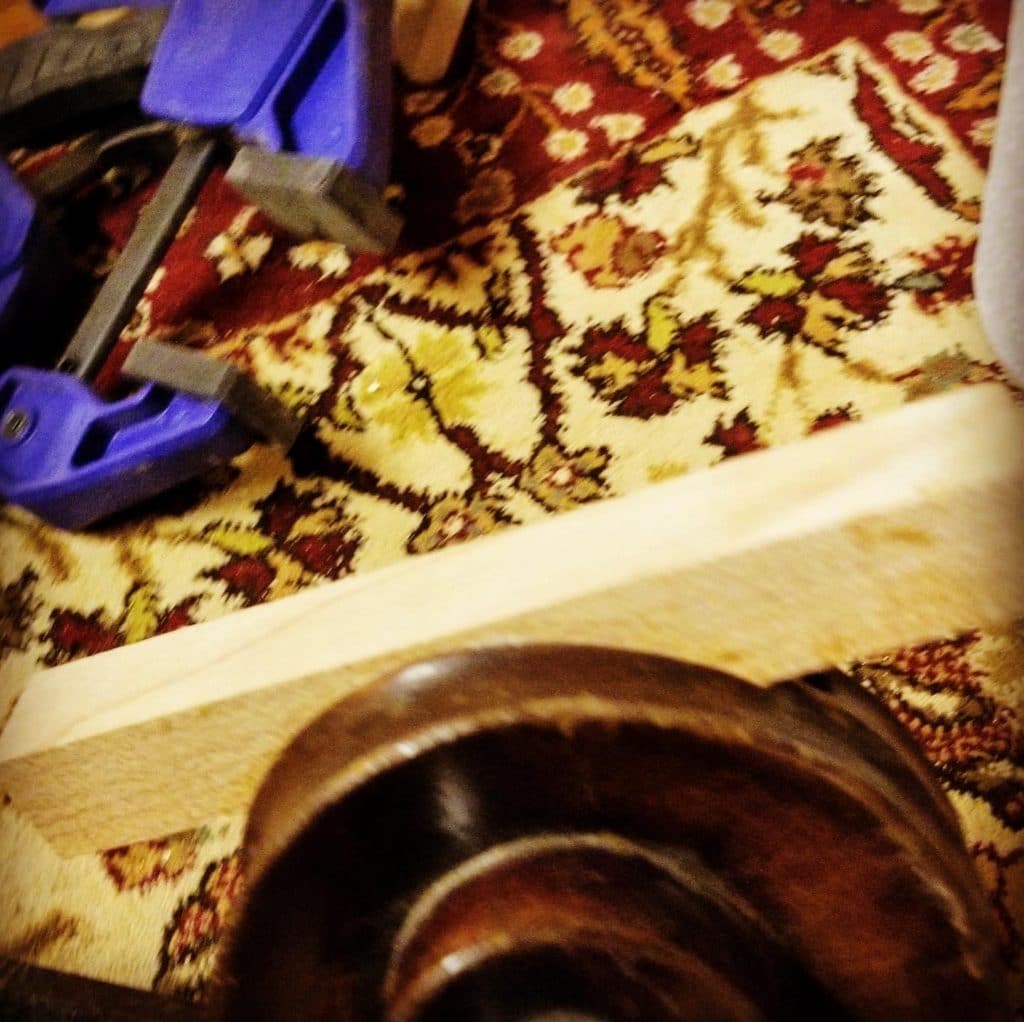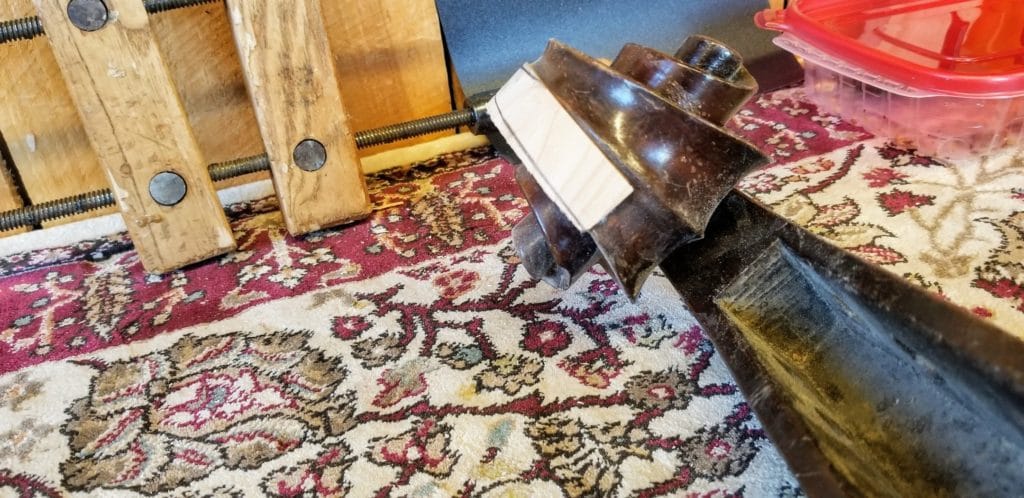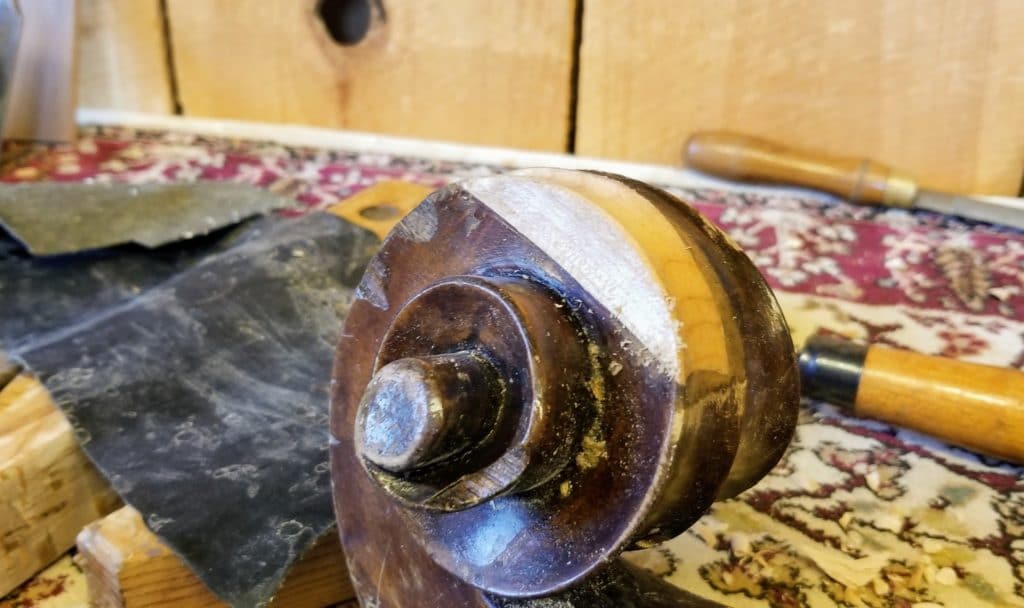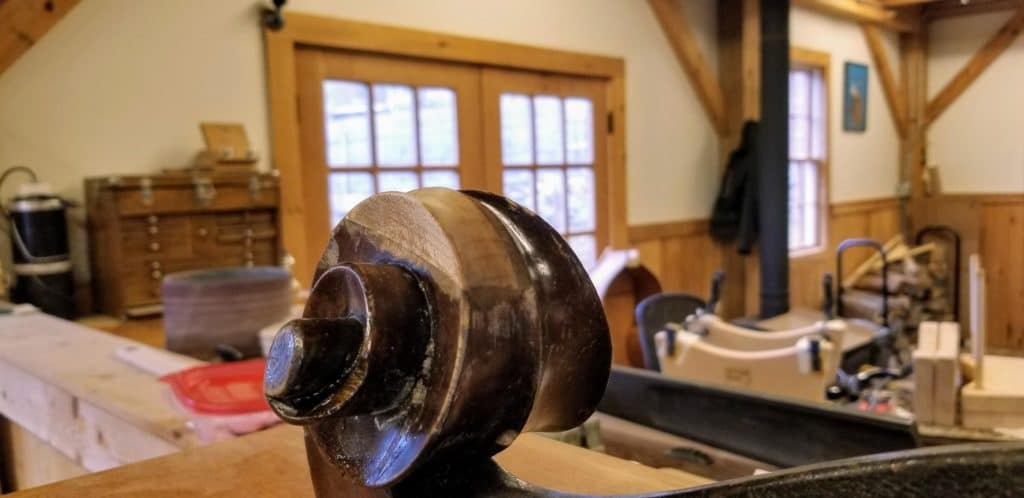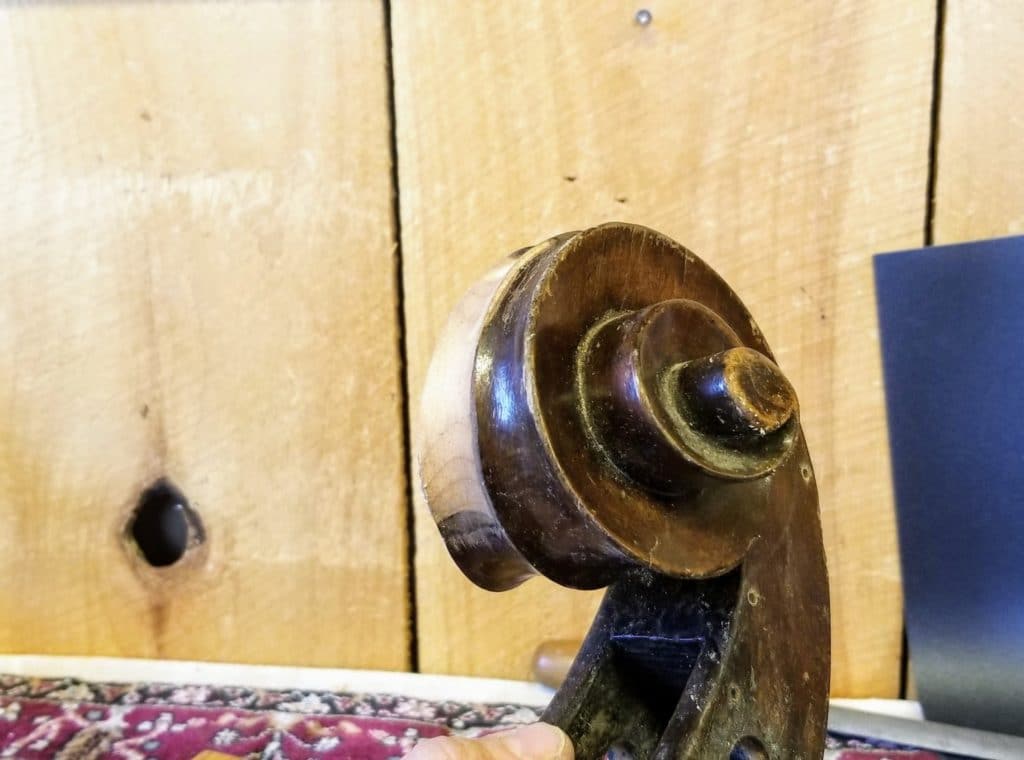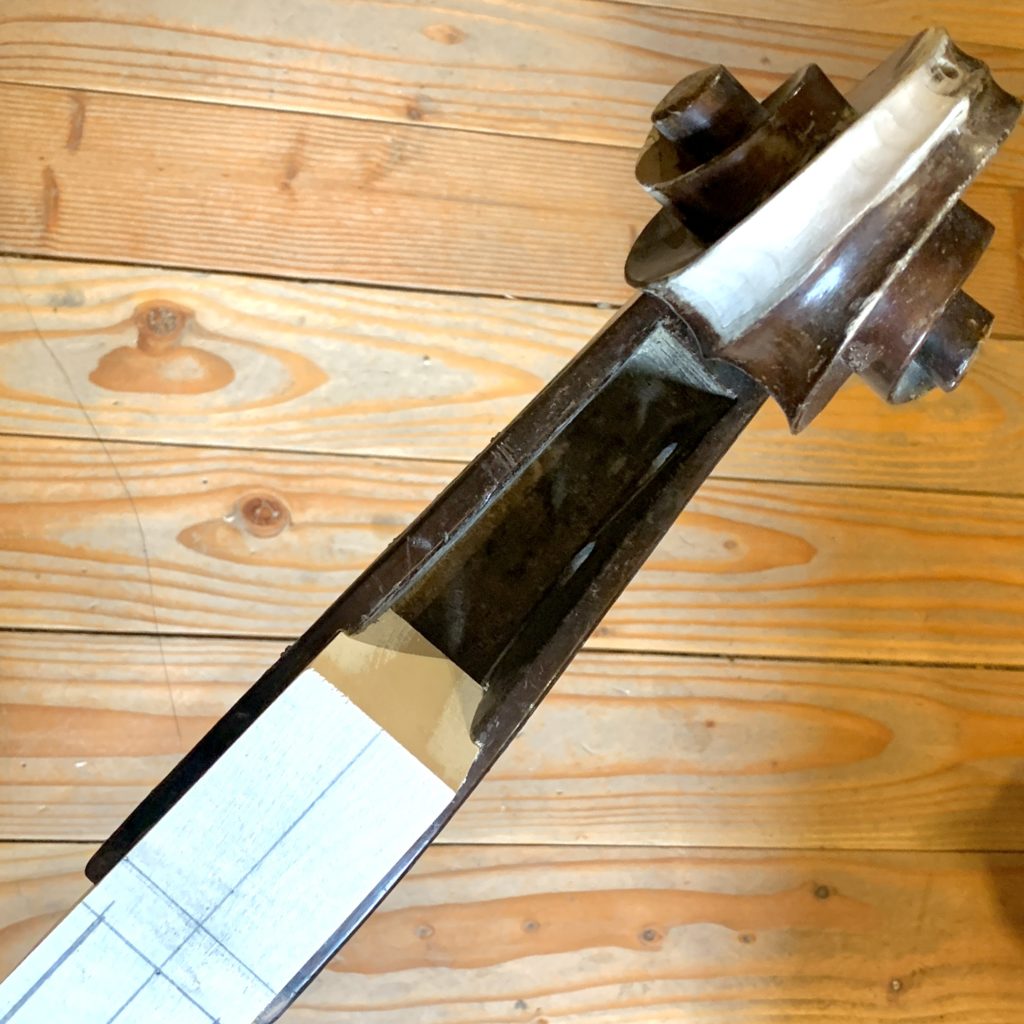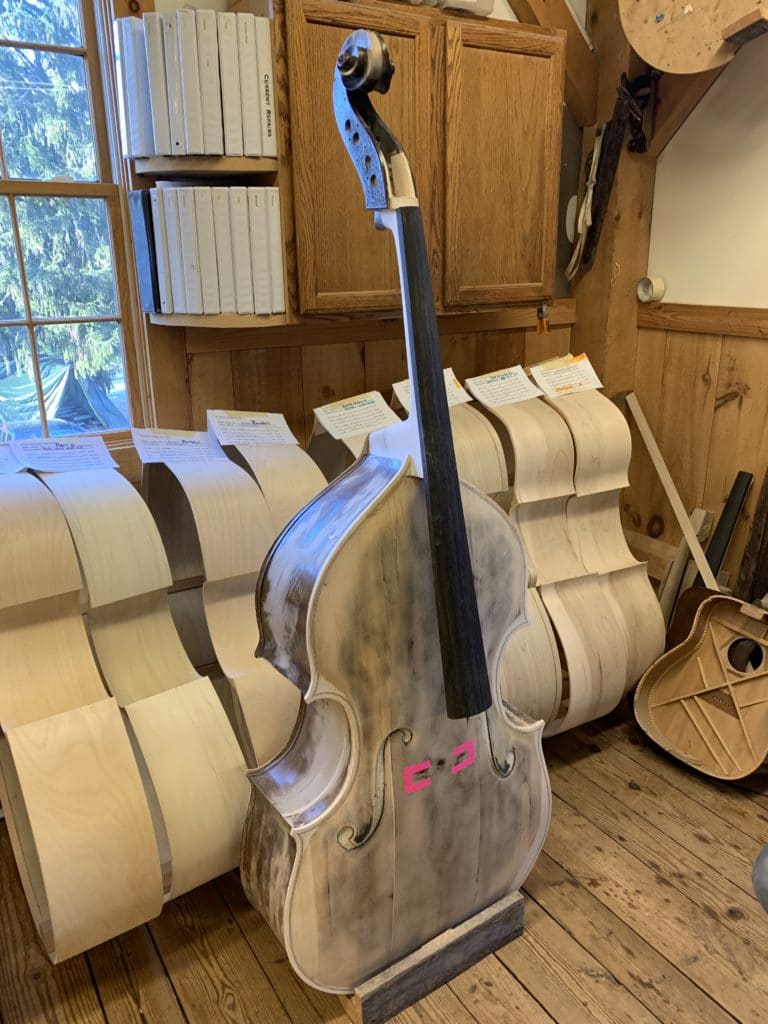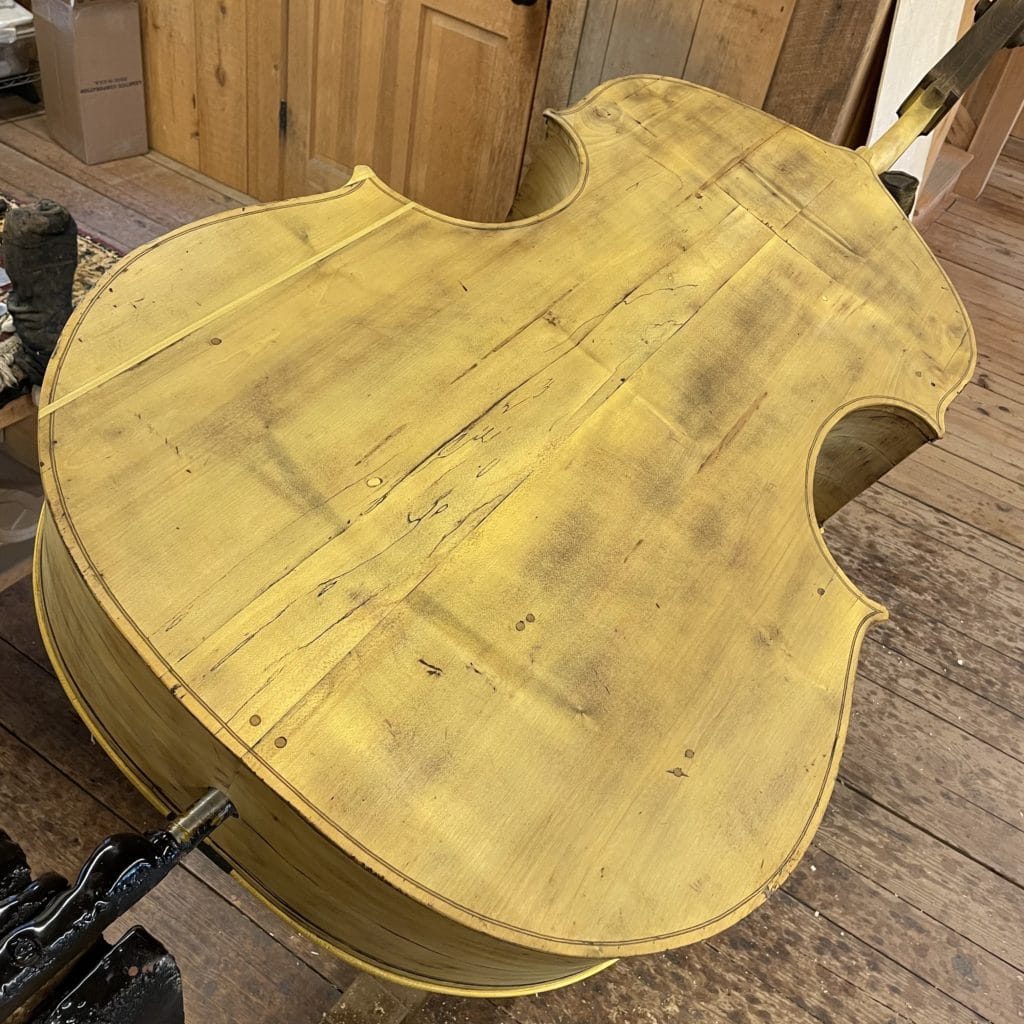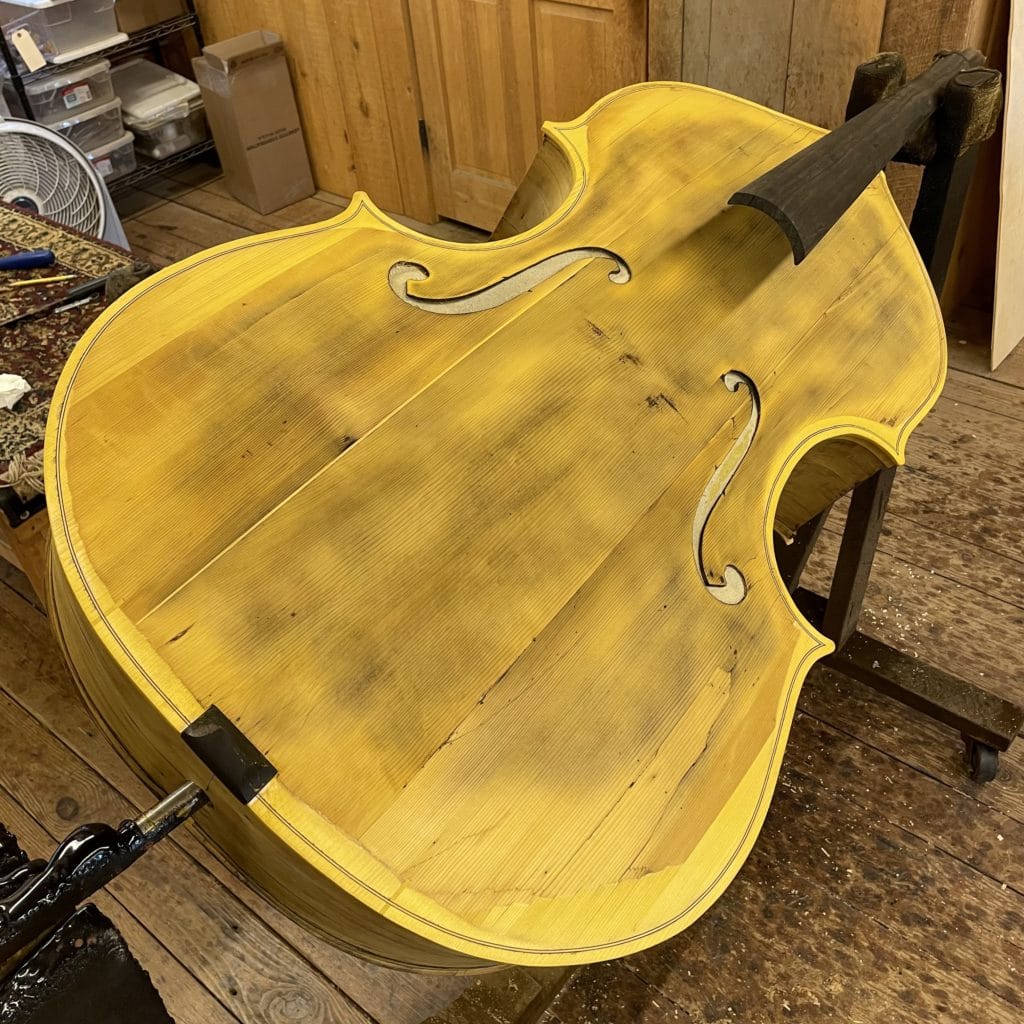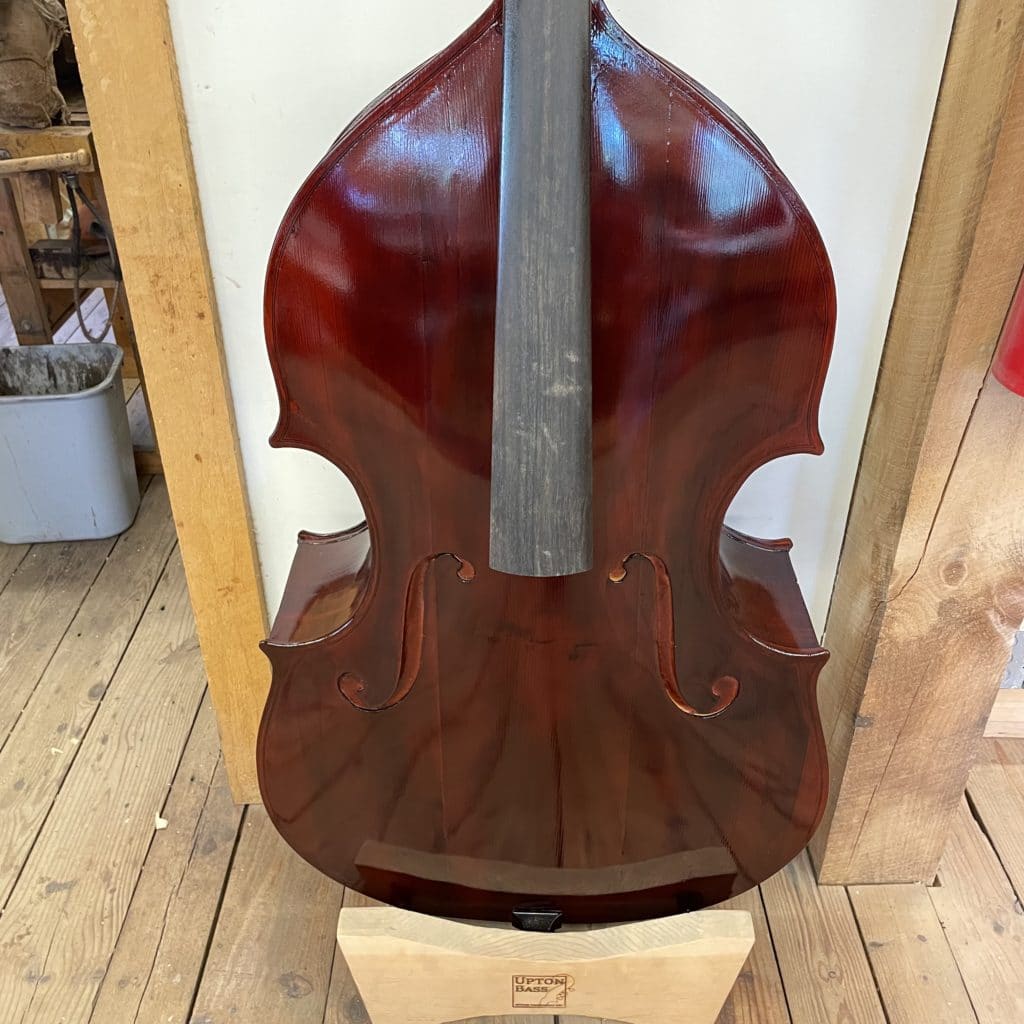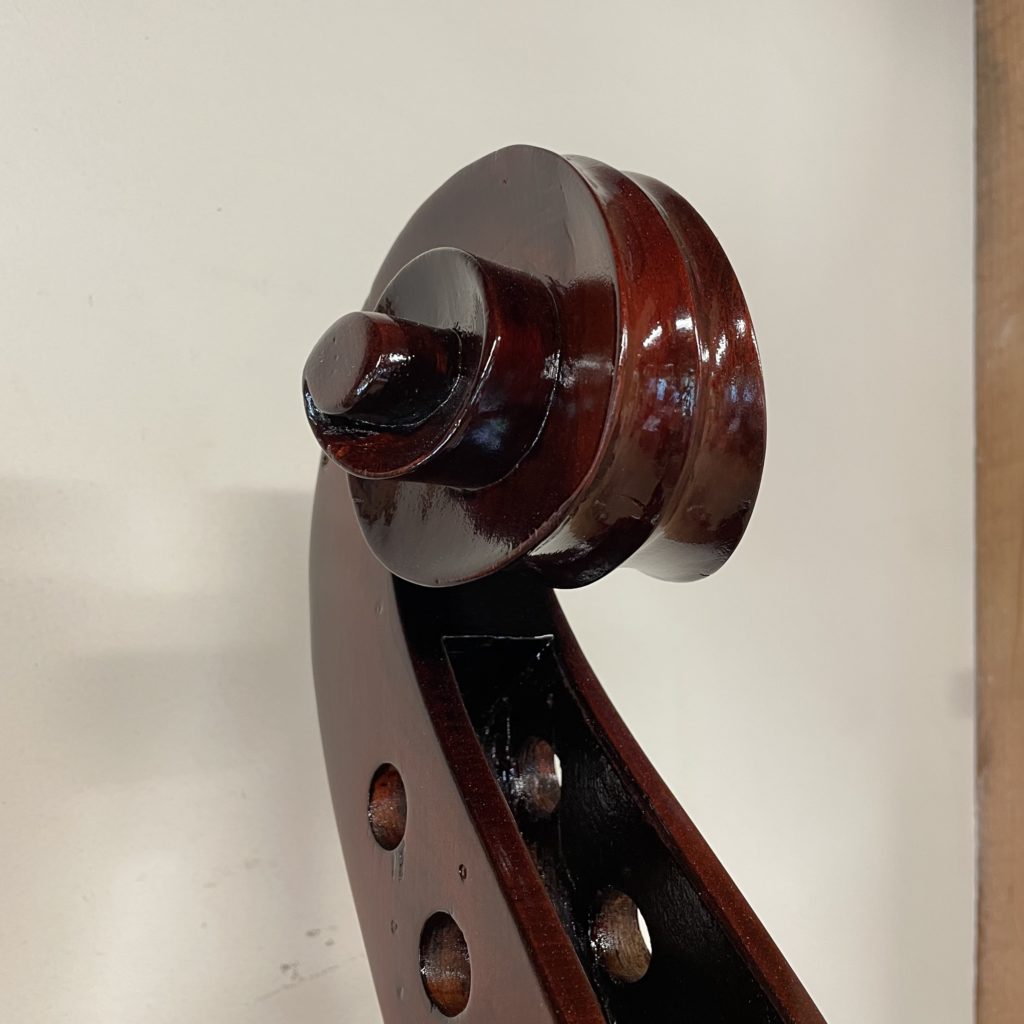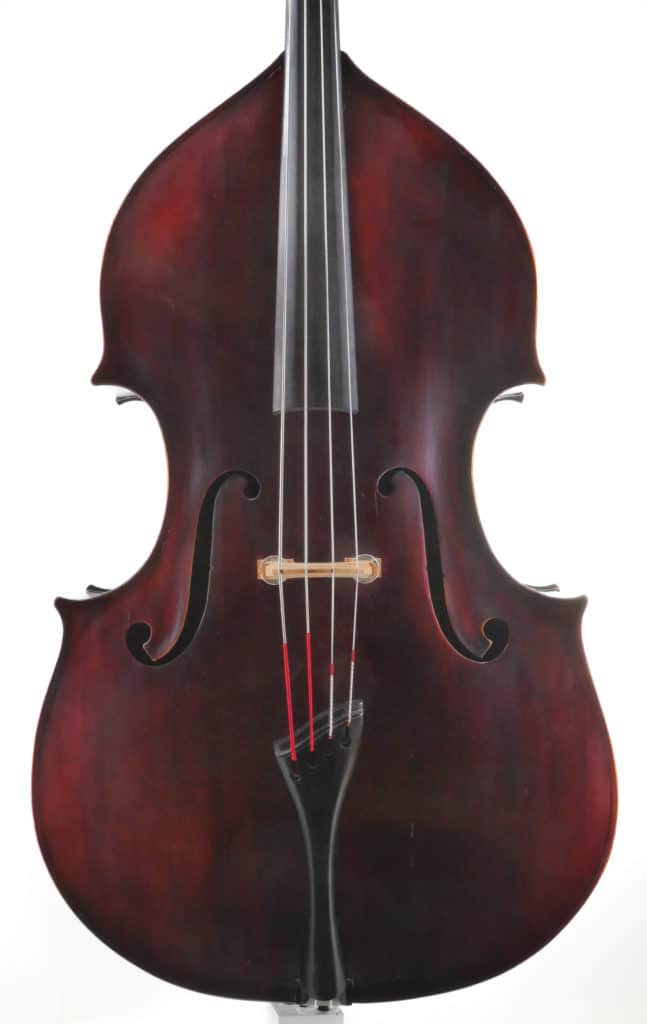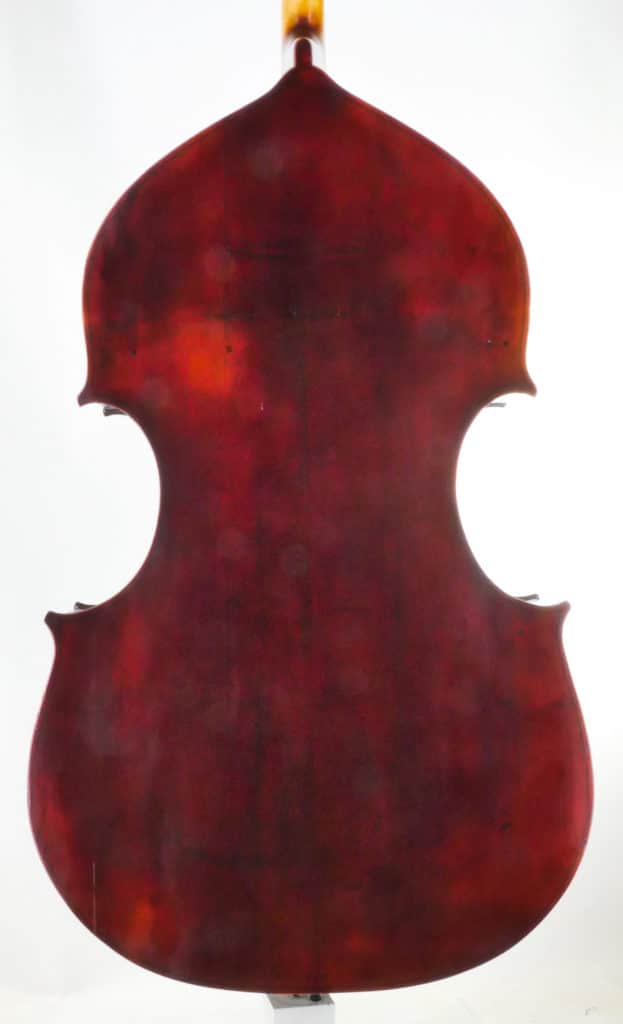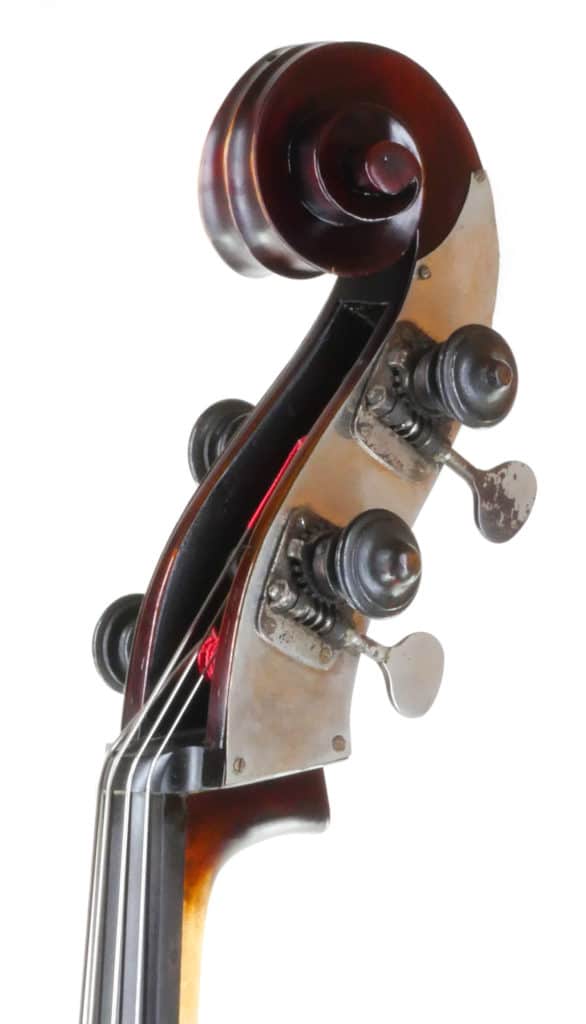Oreste Martini (1893-1957) learned his craft from the great Mantuan maker Stefano Scarampella. After his tutelage under master Stefano Scarampella, beginning at age 14, Martini was producing his own instruments by his early 20s. He began his career with a focus on double basses (reported to be a double bassist himself) but went on to craft many violins, violas, and cellos (He is credited with more than 300 violins, 10 violas, 50 cellos, and 45 basses). While other pupils copied Scarampella’s works, Martini adopted his own artistic flair. He received medals for his work in Cremona, Padua, and Paris and his work is a fine example of the early 20th century Mantuan school.
This Martini upright bass, made when he was 32 years old, was brought in to us to make it playable again after years of neglect.
The owner had never seen the back flat and knew the bass had tremendous potential. We knew this was going to be one of the biggest projects we’ve ever taken on, and after having the opportunity in 2019 to photograph and study a Martini made in 1919, we knew we could bring this bass back to its glory!
The first step was complete disassembly. Everything was taken apart…every lining, cleat, block…if it was glued together, it was carefully unglued. The back had been so uneven that previous “repairmen” fit new braces around the undulations! Braces were screwed or pegged to keep them in place. It became apparent that this bass most likely was the victim of a flood as we do not believe the spalting (spore stains from fungus) were “original” in the wood choice and helped explain the severe damage to the back, top, and ribs along the lower half of the bass.
The back was disassembled and steam flattened on a press. Everything was rejoined and rebraced using our more modern bracing system. The label was not removed from its original brace and was relocated to the more traditional bass side so as not to be damaged by the soundpost (see original sound post placement in proximity to the label). Next, the ribs were one by one stabilized and reassembled onto the back. The original corner blocks were retained while a new neck and lower block were fit. This process took several months to complete!
Once the ribs were reassembled onto the back, it was time to focus on the top. Sections had been replaced with poorly executed and mismatched areas, so we began by building up the non-original areas. The top was very thin and very delicate and would often break just handling it. Once stable, we began to look at getting it back on the ribs. Although the back outline was preserved, it was clear the top could never meet the outline, so we had to backtrack and glue on a new edge to re-establish the outline. Everything was removed from the purfling out and a new spruce perimeter was grafted to the top.
We could then outline the top, close the body, and re-purfle the top.
The finished bass! Considering the relatively young age of this bass (1925) it has lived an extremely hard life of abuse, accidents, and poor repairs. The voice of this bass was resonant, rich, and clear with lots of volume. We feel honored to be able to reset the clock for this amazing bass and can only hope the next 96 years of its life are much easier than the first 96 years!
